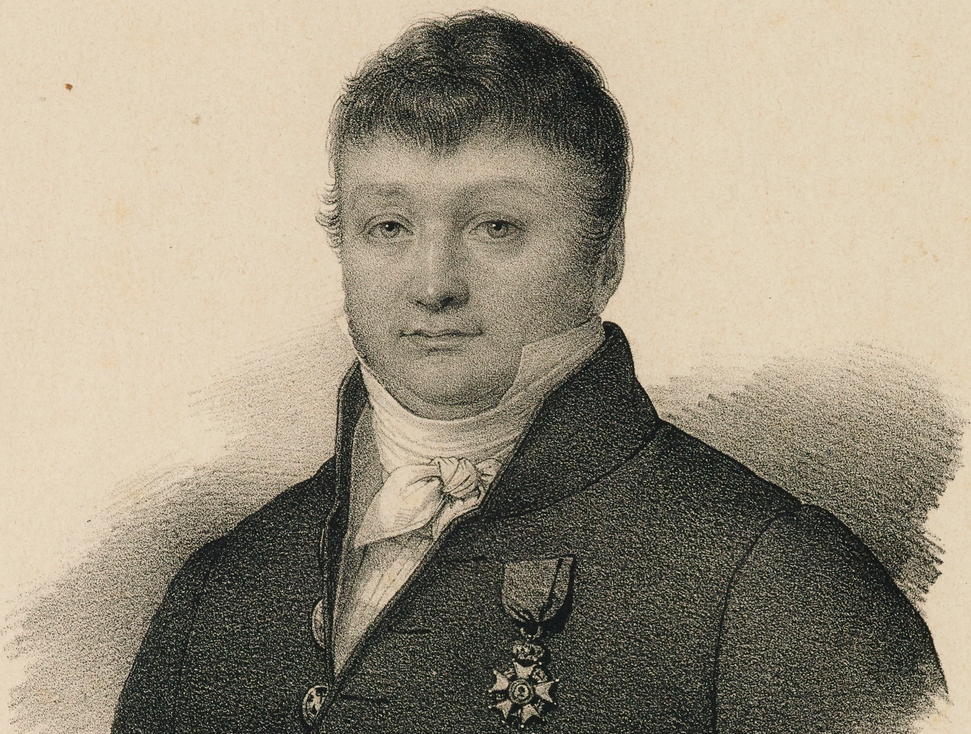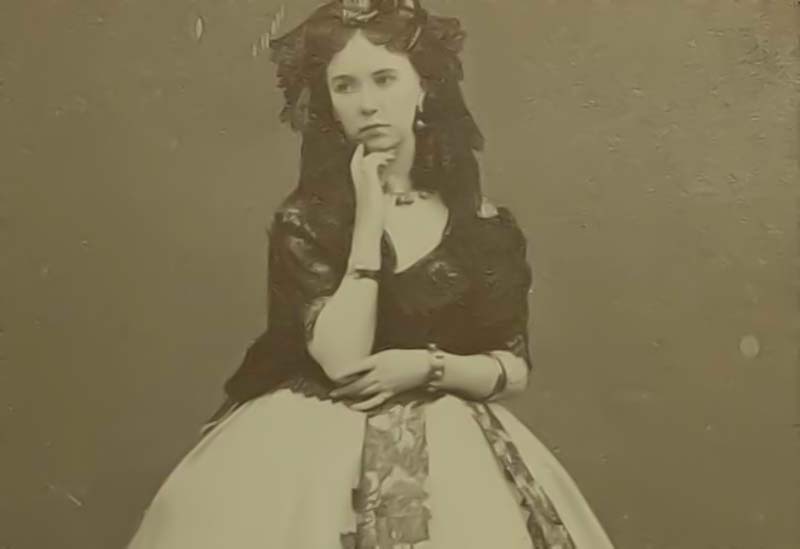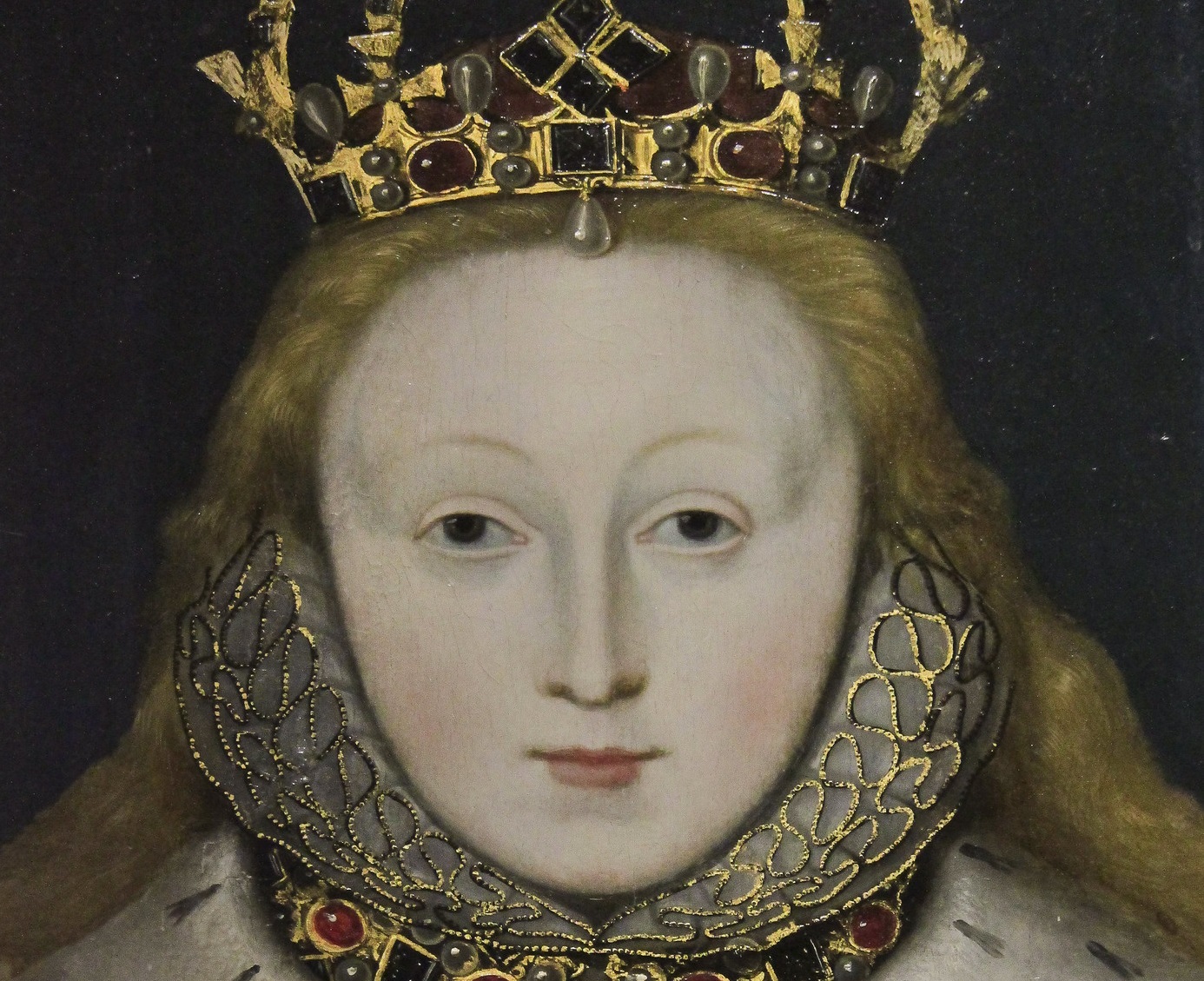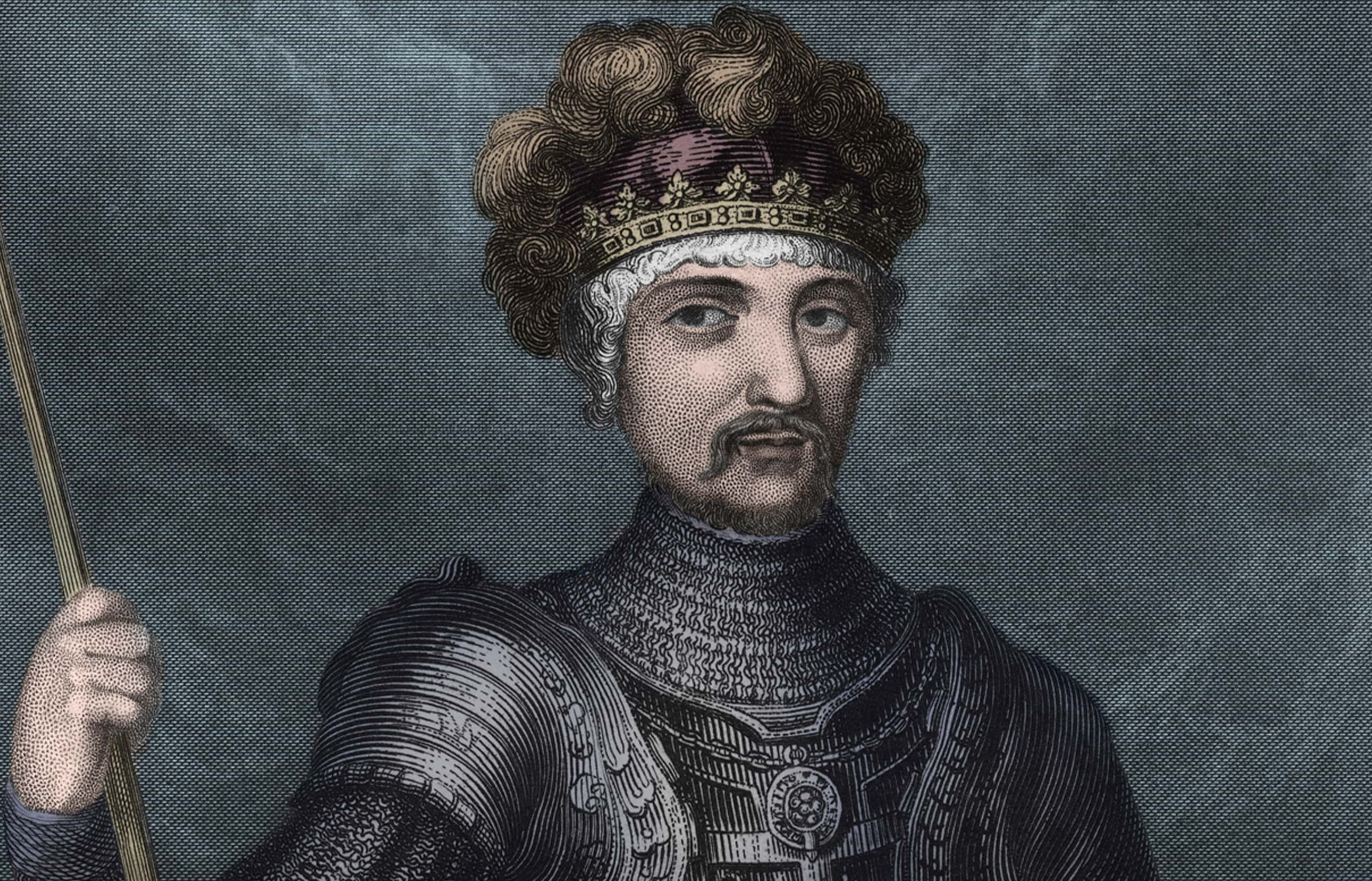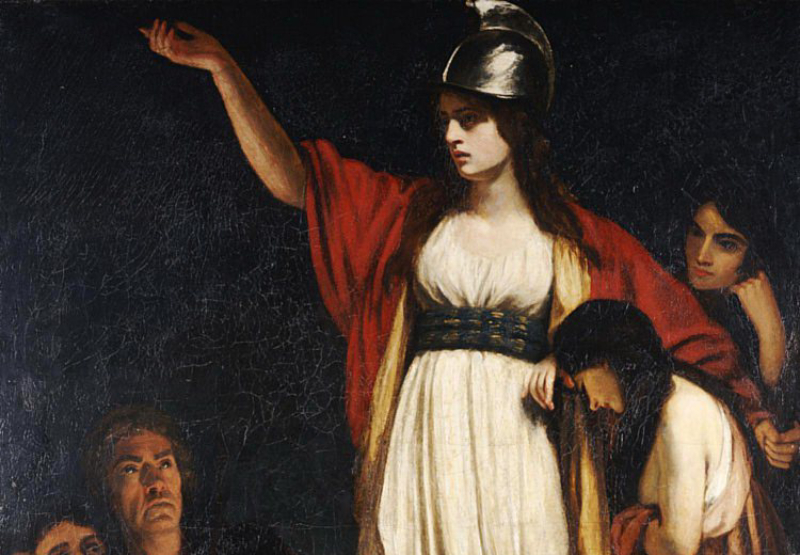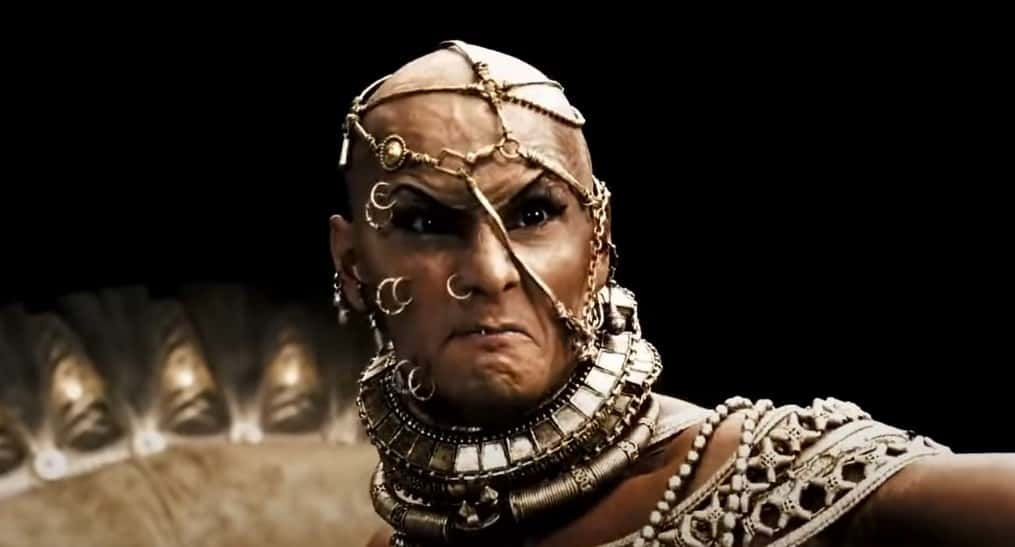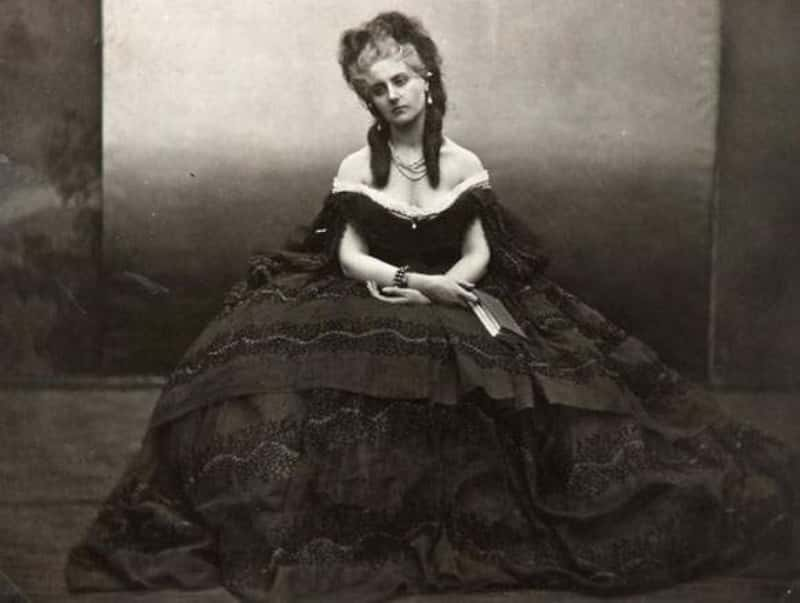Henry VIII, Genghis Khan, Marie Antoinette, Alexander the Great. There are plenty of names that have gone down in history, for great and terrible reasons. However, what about the people whose names aren't in every history book? After all, they can't cover everyone, but that doesn't mean these lesser-known men and women don't have some exciting stories to tell. Read on for facts about the remarkable historical figures that no one has heard of.
1. World Record Holder
A noblewoman who owned land in the Kingdom of Hungary in the late 16th and early 17th century has a rather notorious world record: she is listed as the most prolific female murderer of all time. Countess Elizabeth Bathory de Ecsed would lure peasant girls to her castle with the promise of work and lodging, only to then ritualistically murder them. During her trial, it was said she slaughtered roughly 650 girls, though historians have since disputed this claim. Either way, her victims totaled into the hundreds.
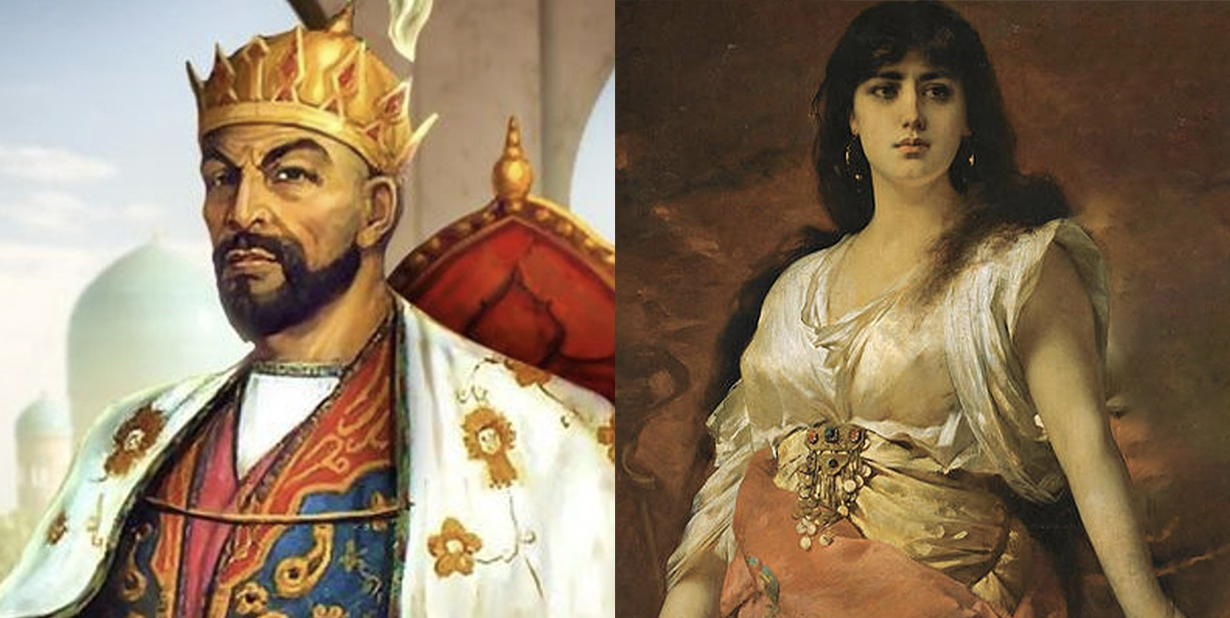
2. In the Dungeons
The investigation into Countess Elizabeth Bathory de Ecsed produced rather stomach-churning results. After arresting the Countess, details began to emerge about the extent of the torment she performed. She used needles, covered girls in honey and live ants, and possibly even performed acts of cannibalism by biting the faces and arms of some girls.
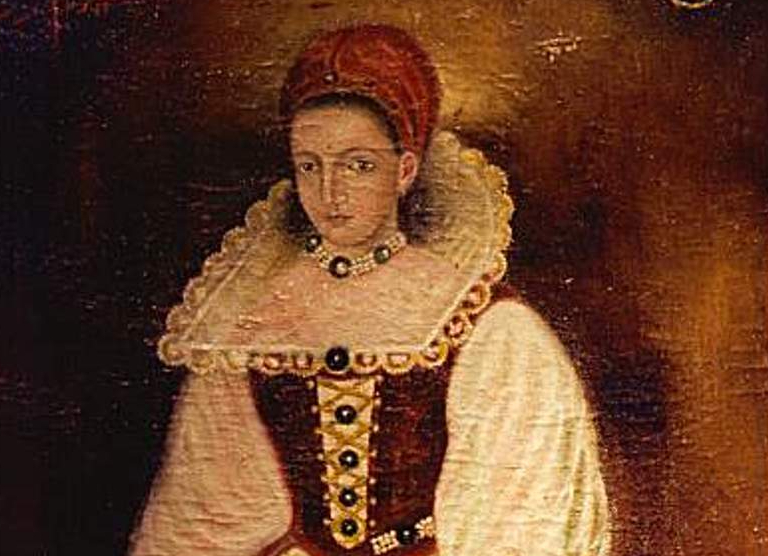 Unknown author, Wikimedia Commons
Unknown author, Wikimedia Commons
3. For Honor
Robert Surcouf was a French privateer who distinguished himself in many battles against the British during the long-standing battle for naval—and colonial—supremacy. Once, having been captured, a British naval officer challenged Surcouf: “We British fight for honor, while you French fight for money". Surcouf replied coolly, “Yes, each of us fights for what he lacks most".
4. Keep Your Ruin
After the warlord Timur (also known as Tamerlane) conquered the ancient city of Dehli, he took control and brought the hammer down. The city was ransacked, plundered, and destroyed. Timur ordered 100,000 captives to be executed. When the city’s inhabitants tried to rise up against their new overlords, Timur made piles of heads and body parts. The city of Delhi didn’t fully recover from this devastation for nearly 100 years.
 Теве, Андре, Wikimedia Commons
Теве, Андре, Wikimedia Commons
5. The Curse of Timur
One of the most haunting stories surrounding Timur actually took place long after his demise. When his tomb was exhumed, an inscription was allegedly found within his casket. The inscription read, “Whomsoever opens my tomb shall unleash an invader more terrible than I". Three days after the exhumation of Timur’s tomb began, Adolf H initiated Operation Barbarossa, the largest armed invasion in human history.
 Rage476, CC BY-SA 4.0, Wikimedia Commons
Rage476, CC BY-SA 4.0, Wikimedia Commons
6. What a Coincidence!
You might be amazed at that coincidence, but you’ll also remember that Adolf H wasn’t just waiting for a curse to be called upon the Soviet Union before he invaded them. So of course, you’ll dismiss the evidence of Timur’s curse as a massive coincidence. However, there’s another aspect to this curse which people tend to forget. In November 1942, Timur’s body was reburied with full Islamic ritual.
Soon after, the tide turned within the Soviet Union, with the Battle of Stalingrad marking the downfall of the German invasion. Was that a coincidence too?
7. Pound of Flesh, Indeed
One of the ghastliest moments in Timur’s army conquests was the destruction of Baghdad during his conflict with the Ottoman Empire. In the late spring of 1401, the city of 20,000 was captured by Timur, who commanded that each of his soldwarriors ers bring back two severed heads. Presumably worried about coming back empty-handed, Timur’s men panicked when they ran out of enemies to behead, so they made up for the shortage by beheading prisoners that they’d already taken.
Some even beheaded their own wives for fear of short-changing Timur.
8. A Fitting Moniker
As a pirate/privateer in the English Channel, Jeanne de Clisson was known as “The Lioness of Brittany". She got this nickname because she was known to raid villages or towns and slaughter their populations, leaving only a few survivors to spread the word that de Clisson’s wrath was not to be trifled with.
 Brice44, CC BY-SA 3.0, Wikimedia Commons
Brice44, CC BY-SA 3.0, Wikimedia Commons
9. Catelyn Stark Sends Her Sympathies
After de Clisson's husband Olivier was captured by the English, he was ransomed back to France. Due to the surprisingly low asking price that the English asked for him, Charles de Blois started to believe that the man had betrayed him. In 1343, Olivier was invited to a tournament outside of Brittany, where he was then ambushed, apprehended, and put on trial for treason. He was executed in Paris that year, much to the shock of his wife.
 Brunodumaine, CC BY-SA 4.0 , Wikimedia Commons
Brunodumaine, CC BY-SA 4.0 , Wikimedia Commons
10. A Grim Reminder
After Olivier de Clisson was executed, his body was put in a Gibbet in Paris, while his head was sent to Nantes. Filled with grief and rage, Jeanne took her sons to Nantes to show them their father’s head and remind them that he’d been slain by Charles de Blois and the King of France.
 J. M. W. Turner, Wikimedia Commons
J. M. W. Turner, Wikimedia Commons
11. It’s on Now!
While we’ll never know if de Clisson’s husband really was a traitor, she was firmly convinced that his demise was an act of murder by Charles de Blois and the King of France. The fact that no evidence was presented to prove Olivier's guilt only made her more convinced. Swearing revenge, she sold off the entirety of her husband’s lands and her personal possessions to raise a small army.
12. The Blood of Angry Men!
Since she was attacking her former allies anyway, it made sense for de Clisson to go whole hog and switch sides. The English and their Breton allies were only too happy to supply her, which led to de Clisson taking to the sea. She formed a small fleet of ships that eventually came to be known as the Black Fleet, for the color that the wood was painted. They were also decked out with red sails, in case anyone was confused by de Clisson’s vengeful purpose.
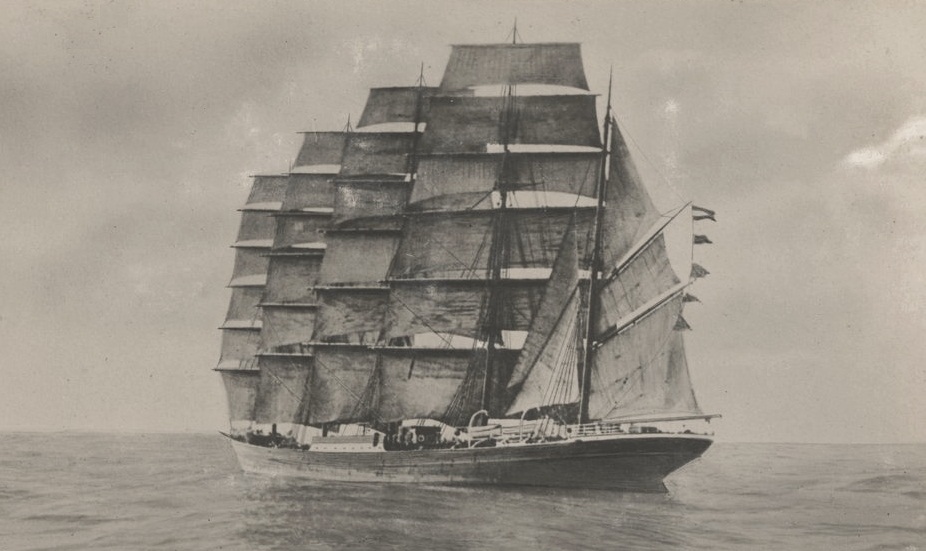 George Schutze, Wikimedia Commons
George Schutze, Wikimedia Commons
13. Golden Child
The most successful of de Clisson’s children was her son, Olivier. Following the passing of his father, the junior Olivier would become immersed in army life. He was reportedly known as “The Butcher” (and we can assume it wasn’t because of any trades that he learned beyond slaughtering people in battle).
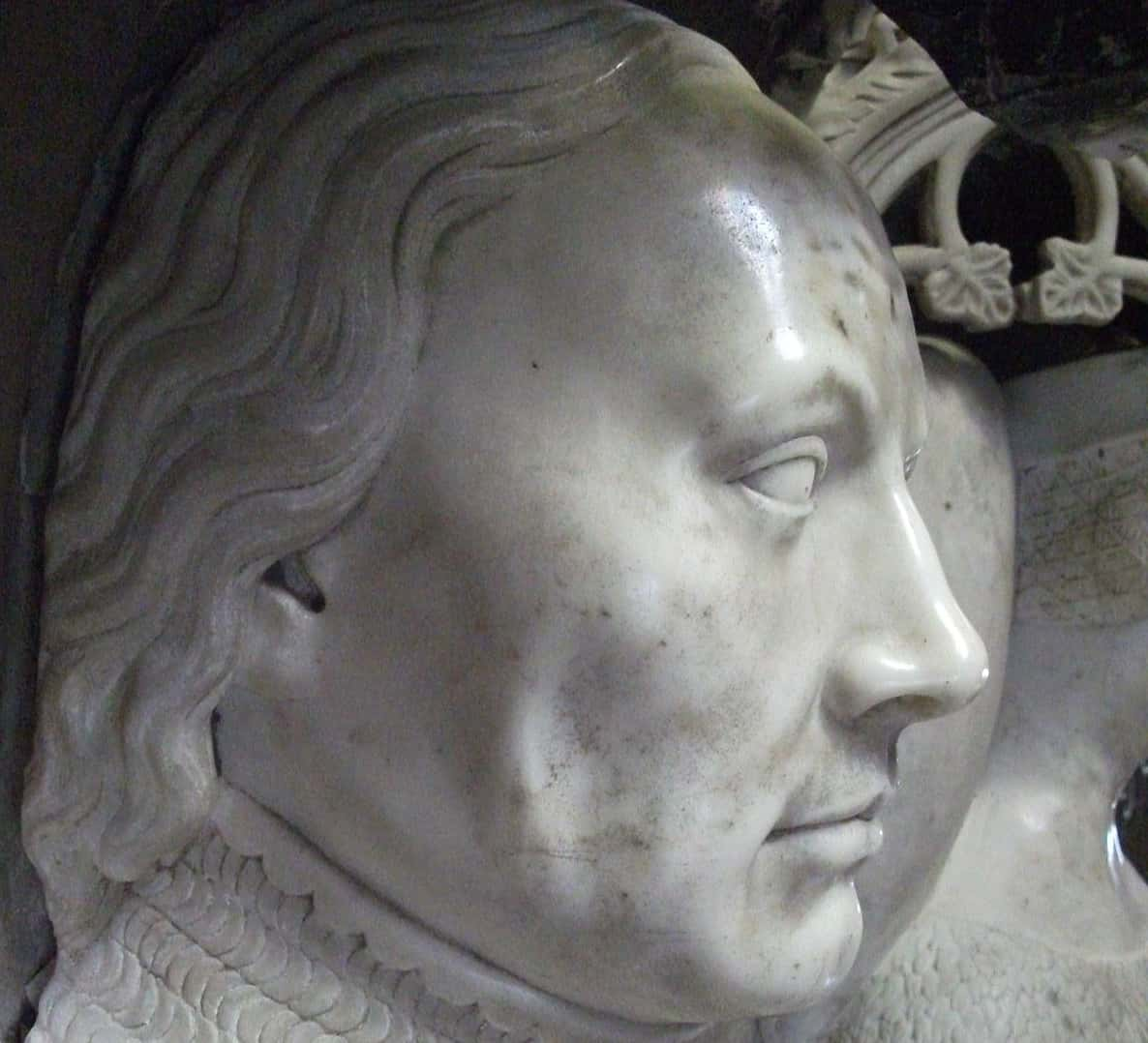 Paul Barlow, Wikimedia Commons
Paul Barlow, Wikimedia Commons
14. “Wrath of Jeanne” was Too On-The-Nose
In case anyone was confused by de Clisson’s intent when she outfitted a small fleet of ships, she named her flagship My Revenge. It’s safe to say that this was the most fitting name for a ship in French history!
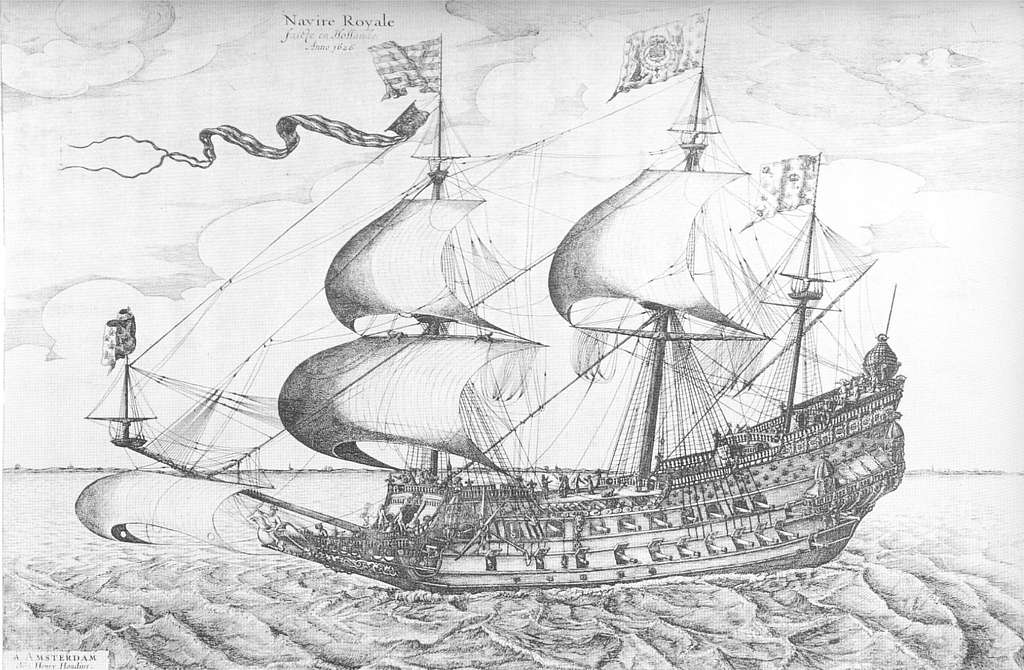 Hendrik Hondius ,Wikimedia Commons
Hendrik Hondius ,Wikimedia Commons
15. An Axe to Grind
According to legend, the few survivors of the Black Fleet's massacres always told the same story. The pirates would board French ships and slaughter nearly everyone inside, while de Clisson herself would personally behead any nobles with her wicked ax—a fitting revenge for her husband’s grim demise.
 Joe Kukowski, Wikimedia Commons
Joe Kukowski, Wikimedia Commons
16. Spread the Word!
Before all the piracy, the very first of de Clisson’s actions in revenge for her third husband’s execution was an attack on the castle of Touffou. Loyal to Charles de Blois, the castle resisted de Clisson’s assault but eventually fell. On de Clisson’s orders, all but one of the castle’s population was massacred.
17. A Chain of Illegitimacy
Janet Stewart was a 16th-century Scottish king’s lovechild who bore a French king’s lovechild. She was the illegitimate daughter of James V of Scotland. As a royal relative, Janet came to France as part of little Mary Queen of Scot’s entourage. There, she herself hooked up with the King of France, got pregnant, and was promptly exiled back to Scotland for her indiscretion. Queen Catherine de Medici, the King's wife, was promised she would never return.
 George Jamesone, Wikimedia Commons
George Jamesone, Wikimedia Commons
18. The Original Funny Gal
Out of all Charles II of England’s mistresses, Nell Gwyn was the most beloved by the common people. Her nickname of “pretty, witty Nell,” originates not from her time in Charles's life, but before, in her years in comedy. Her reputation as a purveyor of sass garnered her much fame as an actress, and she was also popular as a romantic lead.
19. For Your Eyes Only
Charles II owned shirtless paintings of Nell that he kept hidden behind landscapes. Portrait of Nell Gwyn as Venus by Peter Lely has the actress in the buff as the iconic goddess. However, Charles only swung the cover to let the most favored eyes have a glance.
20. Mr. Gwyn, I Presume?
In her younger years, Gwyn experimented with cross-dressing. She donned a beard and men’s clothing, taking on the name “William Nell” in her fairly popular act.
 Charles II: The Power and The Passion,BBC
Charles II: The Power and The Passion,BBC
21. Baby Steps Towards Peerage
On December 21, 1676, Gwyn’s only surviving son, Charles, finally got a title befitting his status as a king’s (illegitimate) son. How Charles became the Earl of Burford is attached to two unseemly stories. The most popular? One day, King Charles II came to visit Gwyn and his son, when she called over their offspring with a, “Come here, you little b*stard, and say hello to your father".
Aghast at her conduct, the King received this explanation from Gwyn: "Your Majesty has given me no other name by which to call him". And thus, Charles gave his son a proper title: the Earl of Buford.
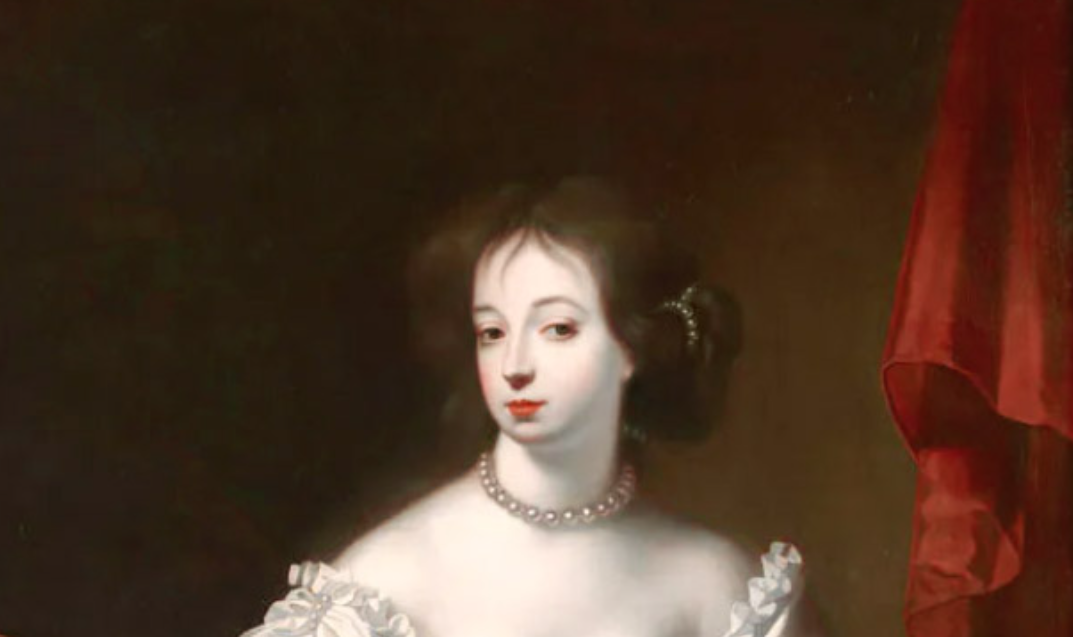 Simon Pietersz Verelst, Wikimedia Commons
Simon Pietersz Verelst, Wikimedia Commons
22. No Time to Brainstorm When Skulls Are at Stake
The second story of how Gwyn secured a noble title for her son is more violent. In this tale, she holds the baby Charles out a window and threatens to drop him unless King Charles elevates their son to the peerage. Instinctually, King Charles cried, “God save the Earl of Buford!” and I guess they went with that.
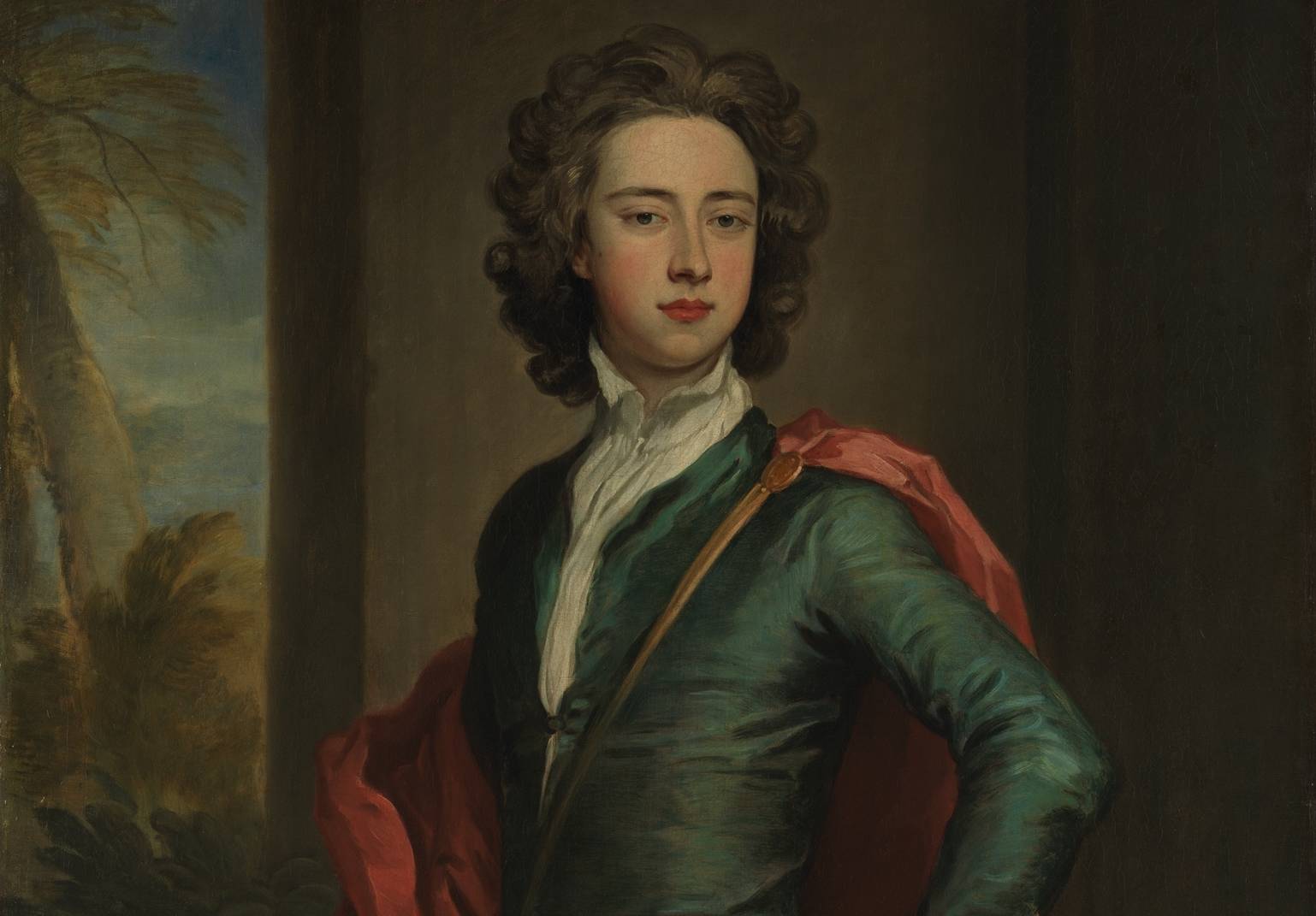 Godfrey Kneller, Wikimedia Commons
Godfrey Kneller, Wikimedia Commons
23. Them’s Fighting Words
One of the most famous anecdotes about legendary lady-duelist Julie d’Aubigny is when she found herself in the town of Villeperdue. She was wearing men’s clothes at the time, and she drew the ire of a young man, Louis-Joseph d'Albert Luynes, the son of a Duke. After she got sick of his insults, she challenged Louis-Joseph to a duel.
It was over before it started: She swiftly thrust a sword into his shoulder, and the nobleman admitted defeat.
 Jolly Film, Madamigella di Maupin (1966)
Jolly Film, Madamigella di Maupin (1966)
24. On Second Thought
Of course, this triumphant duel wouldn’t be half as memorable without the crazy epilogue attached to it. After the duel, while Louis-Joseph was healing from his injury, he sent one of his friends to apologize to d’Aubigny on his behalf. D’Aubigny must have really appreciated him eating his words, because she later visited him in his quarters.
One thing led to another, and soon enough d'Aubigny was his lover. In fact, the two of them remained lifelong friends after that. Who knew dueling brought enemies so close together?
 Jolly Film, Madamigella di Maupin (1966)
Jolly Film, Madamigella di Maupin (1966)
25. Surprise!
D’Aubigny eventually traveled the countryside, putting on fencing exhibition. She was once challenged by a male spectator who claimed that no woman could be as skilled with a sword as d’Aubigny was. Wasting no time, d’Aubigny took off her top and flashed the crowd to prove that even though she was wearing men’s clothes, she was definitely a woman.
 Jolly Film, Madamigella di Maupin (1966)
Jolly Film, Madamigella di Maupin (1966)
26. A Japanese Robin Hood
Ishikawa Goemon was known for robbing the wealthy and giving the fruits of his exploits to the poor. Born in 1558, he was believed to be a ninja apprentice of the Iga clan before becoming a runaway ninja. He was remembered for his "Robin Hood" activities, and was publicly boiled for a failed assassination attempt.
27. Top Markswoman
Lyudmila Pavlichenko was a female Red Army trooper who is credited as being among the top army snipers in history as well as the top female sniper of all time. Frustrated with the way the conflict was going, Pavlichenko joined the Red Army soon after the German invasion in 1941, dropping out of the University of Kiev where she had been studying history.
She soon made her mark on the conflict with an incredible 309 confirmed kills.
28. Can Do No Right
At age 15, Crown Prince Sado of Korea was appointed regent by his father, King Yeongjo, and given the power to make important administrative decisions—but according to the memoirs of Sado’s wife, Lady Hyegyeong, nothing Sado did would ever satisfy his father. No matter what decision he made it was wrong, and Yeongjo would deliberately humiliate Sado by criticizing him in front of a crowd. No wonder the poor kid had issues.
 Showbox Entertainment, The Throne
Showbox Entertainment, The Throne
29. Acting Out
After Price Sado’s stepmother and grandmother both perished in the same month, his mind snapped. He became cruel and violent. He beat his eunuchs, slaughtered palace staff, and forced himself on ladies-in-waiting. In one instance, he walked into his rooms holding the recently-severed head of a eunuch who he'd just offed. He then forced anyone who was around, including his own wife, to look at it.
 Showbox Entertainment, The Throne
Showbox Entertainment, The Throne
30. Do Something!
Eventually, Sado’s behavior got way too out of control for his mother, Consort Yeong. Sado’s wife had spoken to her about his killings but begged her not to say anything for fear of what he’d do if he found out she’d told her. Yeong stayed silent for a while, but when a rumor started circulating that Sado had entered the palace with the intention of slaying his father, enough was enough. She apparently went to Yeongjo that same day and told him that Sado was out of control and had to be executed.
 Showbox Entertainment, The Throne
Showbox Entertainment, The Throne
31. How Do You Solve a Problem Like Prince Sado
When it came to dealing with Sado, Yeongjo had a bit of a conundrum. On the one hand, he knew that slaying Sado was pretty much his only option, but on the other hand, it was against the law to spoil a royal body, and his innocent wife and son could also be slain if he was executed as a criminal. Yeongjo’s solution was to force Sado to climb into a rice chest and be left to die. It took seven days for him to finally starve, but technically, he wasn’t executed.
 Showbox Entertainment, The Throne
Showbox Entertainment, The Throne
32. Curse of the Black Pearl
Cora Pearl was an English courtesan who was renowned for her affairs with multiple members of the 19th-century French royal family, her decadent spending, and, most of all, her malice. Pearl openly referred to her men as her “chain of gold,” i.e. interchangeable and enriched stepping stones on her way to fortune. As if to publicly mock her “dark” reputation, Pearl often wore a famous necklace of black pearls that became her calling card.
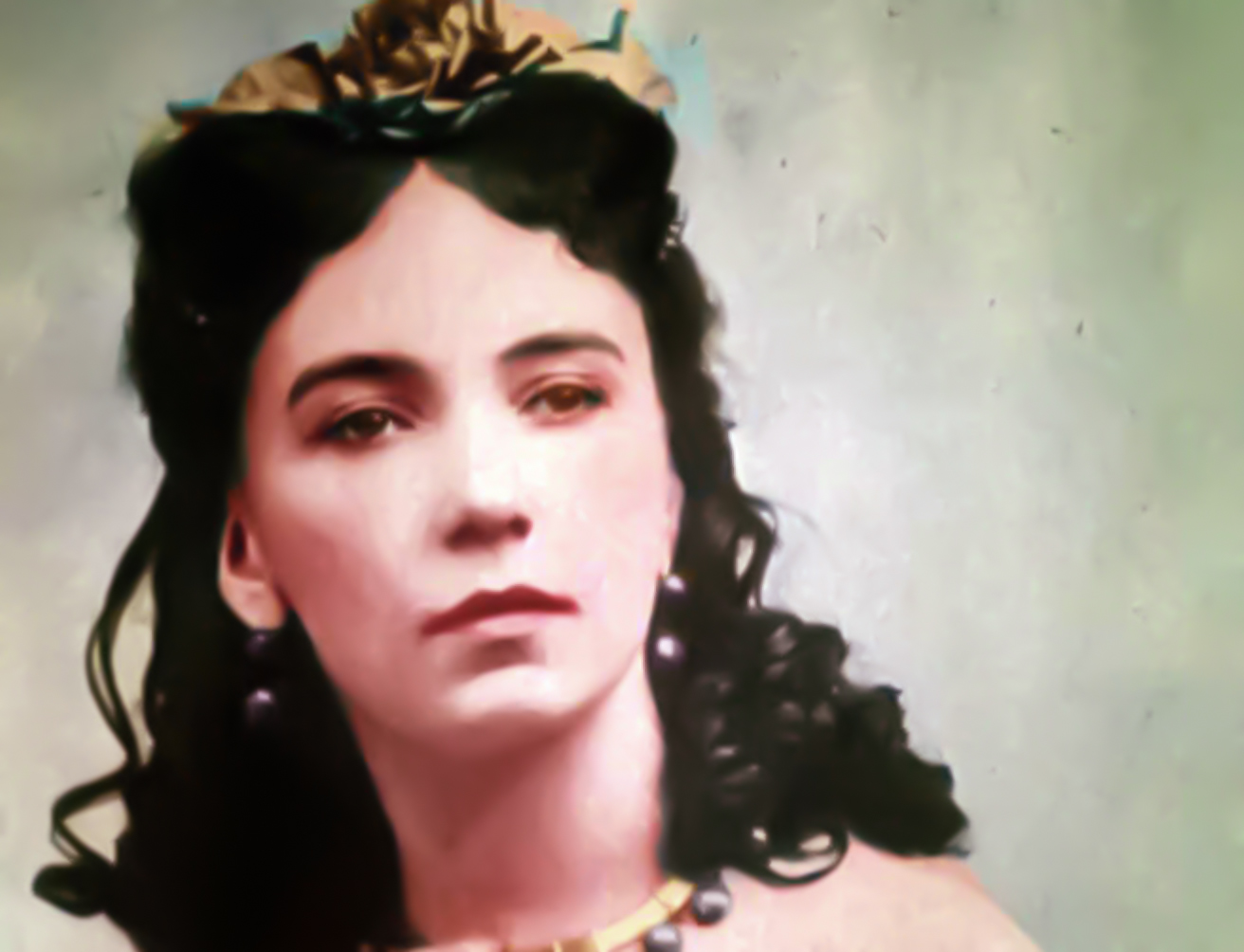 Themadchopper, CC BY 2.0 , Wikimedia Commons
Themadchopper, CC BY 2.0 , Wikimedia Commons
33. Served With a Side of Buns
Cora Pearl’s decadence was so great, an army of servants once carried her in the buff upon a silver platter into a party. Sexy, but not very sanitary.
34. Bad Knight
Although knights were portrayed as chivalrous Sir Lancelot types, the truth is that many knights were bad men with swords. In 1379, Sir John Arundell rode to a convent, looted the nunnery, stormed a nearby church, kidnapped a newlywed bride, before topping it all off by taking the nuns out the sea and tossing them overboard.
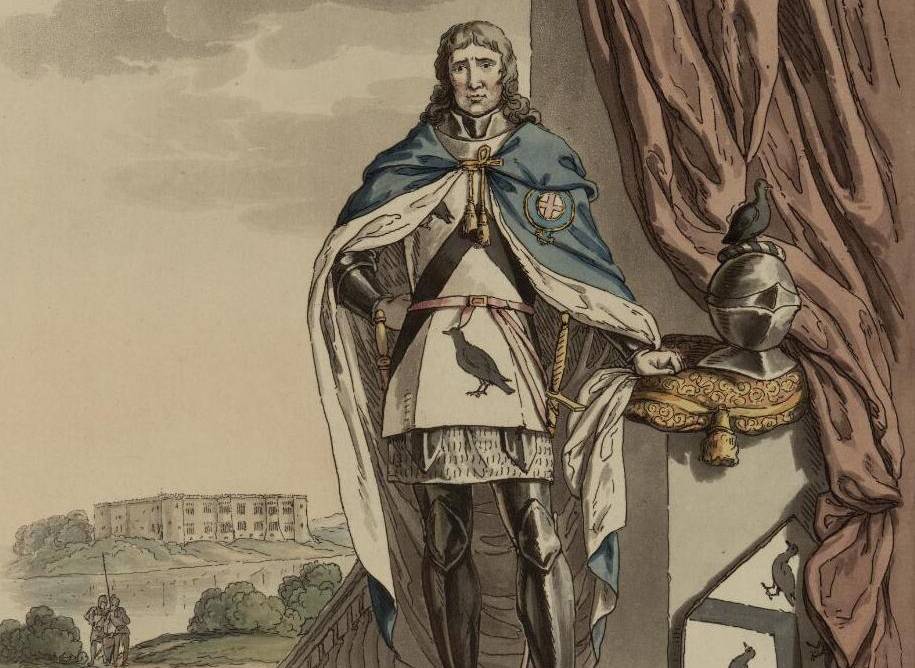 John Augustus Atkinson, Wikimedia Commons
John Augustus Atkinson, Wikimedia Commons
35. Teen Tyrant
Murad IV, Sultan of the Ottoman Empire, was born during a particularly violent period for his kingdom. Being under perpetual attack can be stressful even for the most seasoned leader, but Murad took it all in stride and did as the Romans do, using the brutality to his advantage. During his reign, he slew his siblings, banned nicotine and coffee (making their use punishable by execution), and made sure to hang or impale anyone who defied him—and that was just for starters.
He had his corrupt advisors strangled in his presence, executed a bunch of high ranking army officials, and he had the head of the Islamic Supreme court executed. All in all, he was one scary dude that you were better off not to mess with!
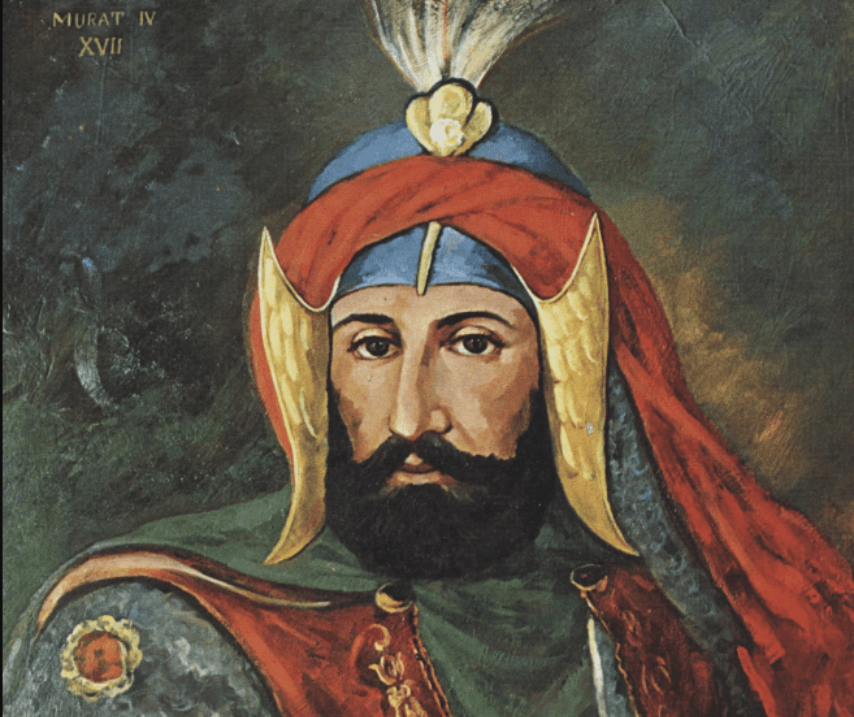 Unknown Author, Wikimedia Commons
Unknown Author, Wikimedia Commons
36. Crowning Achievement
Throughout most of his time at court, John Dee remained a close advisor to Elizabeth I. She depended on him for counsel in matters of science, medicine, and exploration, not to mention a little private astrology. Elizabeth even trusted Dee to choose the date of her coronation.
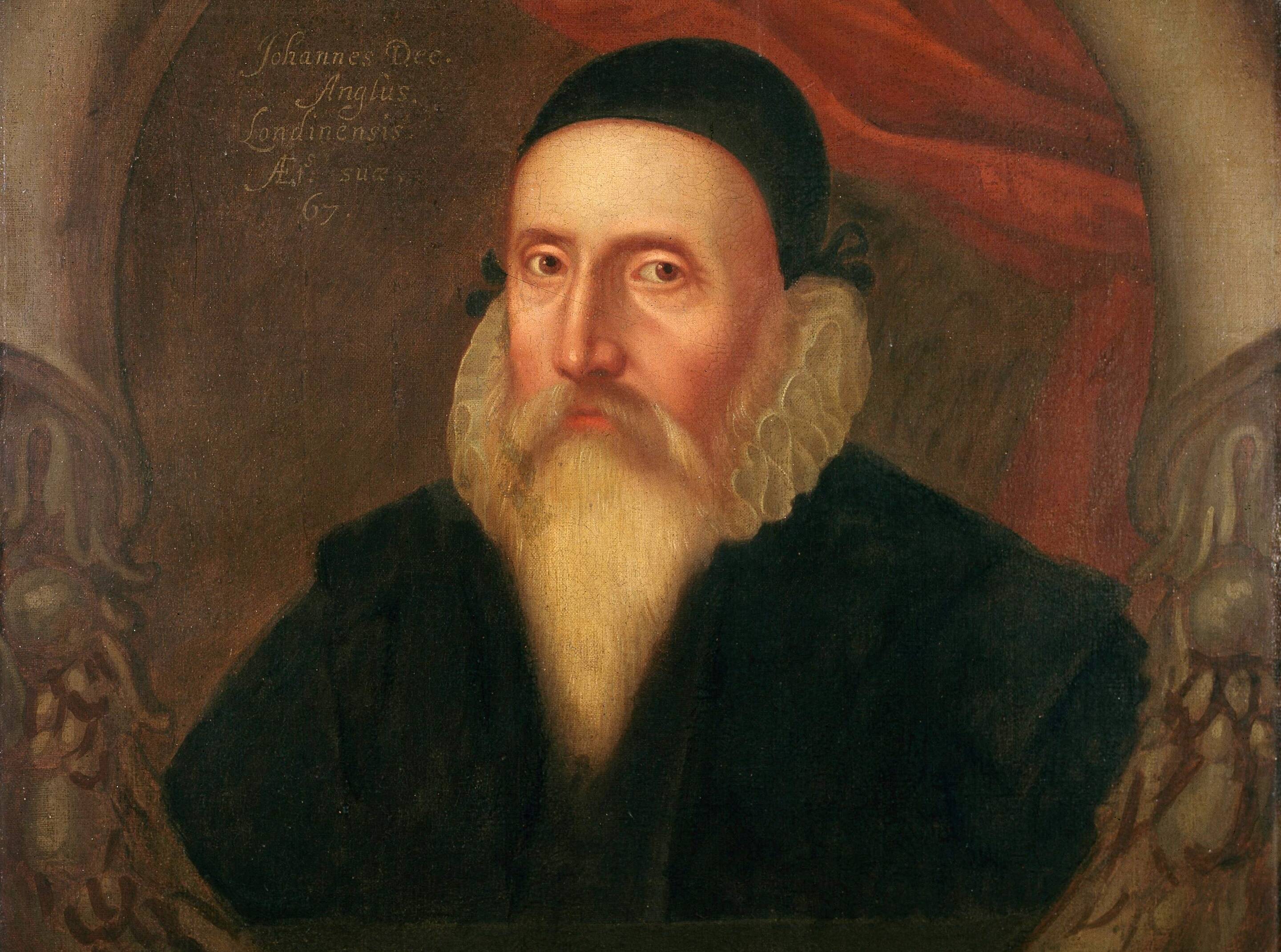 Unknown Author, Wikimedia Commons
Unknown Author, Wikimedia Commons
37. Revisionist History
One of the best images we have of John Dee is a painting called “John Dee Performing An Experiment Before Queen Elizabeth I". The painting shows Dee standing before the queen in her court; a room of amazed courtiers look on as Dee creates a flame in a silver goblet. In 2016, however, an x-ray scan of the painting revealed a surprising secret: an original version of the painting showed Dee standing in front of Elizabeth, surrounded by a ring of human skulls.
 Henry Gillard Glindoni, CC BY 4.0, Wikimedia Commons
Henry Gillard Glindoni, CC BY 4.0, Wikimedia Commons
38. Her Majesty’s Secret Service
Dee and Elizabeth sometimes communicated in secret. They would send letters back and forth, written in a secret code. He would sign his coded letters “007". Now that sounds familiar...
39. Magic Tricks
By most accounts, Dee’s partnership with the mystic Edward Kelley was built on dishonesty, and many suspect Dee was suckered by the charlatan Kelley, who had a history of cons and forgery. Not only did he have several aliases, but a conviction for coin-counterfeiting in 1774 cost him his ears—a disfigurement he hid from then on with a black skullcap. Others noted Kelley had a talent for ventriloquism which might have helped him “communicate with spirits".
 Thomas Pennant, Wikimedia Commons
Thomas Pennant, Wikimedia Commons
40. Sharing Is Caring
John Dee's wife Jane participated in her husband’s work as well, providing him with important insights on matters of women’s reproductive and sensual health. In return, John (with the help of Edward Kelley) helped Jane communicate with angels. This continued until the "angels" advised them that they should try partner-swapping with Kelley and his wife, Joanna.
 Unknown Author, Wikimedia Commons
Unknown Author, Wikimedia Commons
41. You Remind Me Of Someone
Together, John and Jane Dee had eight children. There is, however, reason to believe that their son, Theodore, was actually fathered by none other than Edward Kelley—though Dee was distraught that the angels suggested he and Kelley share their wives, they allegedly went through with the arrangement. Who was Dee to question the word of a (definitely real) angel?
 Unknown Author, CC BY 4.0, Wikimedia Commons
Unknown Author, CC BY 4.0, Wikimedia Commons
42. Can't Outrun The Past
Dee and Kelley parted ways almost immediately after the partner-swapping incident. Kelley set out for Germany, where his illicit past caught up with him. Kelley promised, and failed, to turn iron into gold for Prince Rudolf II. Apprehended for fraud, Kelley was slain trying to escape from a German prison.
 Unknown Author, CC BY 4.0, Wikimedia Commons
Unknown Author, CC BY 4.0, Wikimedia Commons
43. That’s Not My Name
King Edward III's son, also named Edward, is known to history as the “Black Prince,” but he was probably never called that name. The first reference to him as a “Black Prince” was by John Leland in the 1530s or even early 1540s—some 165-plus years after Edward’s demise.
44. Play With This
Oh, you got some plastic toys for your third birthday? For his third years, Prince Edward was gifted the titles to Earl of Chester and Prince of Wales.
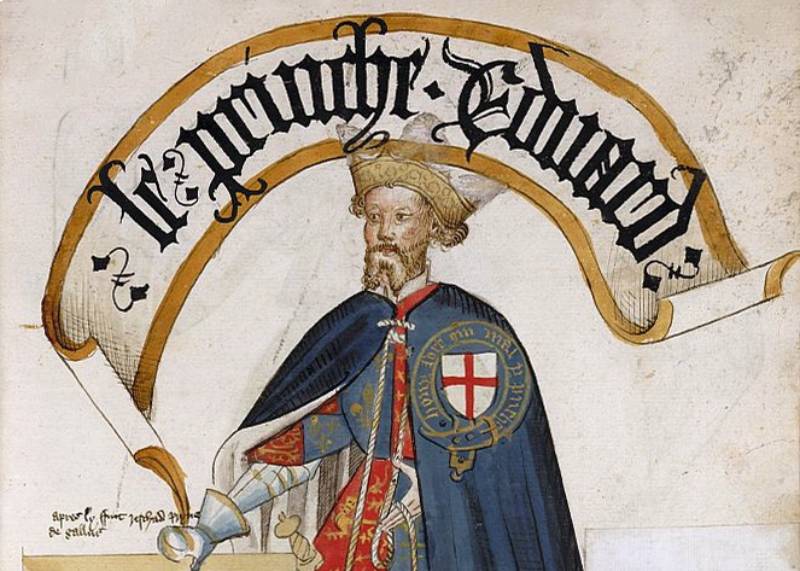 British Library, Wikimedia Commons
British Library, Wikimedia Commons
45. First is the Worst
Edward’s first major combat success was in 1356 in Aquitaine. Although he was outflanked at first, Edward eventually defeated his enemies at Poitiers and even captured the French king himself on September 19.
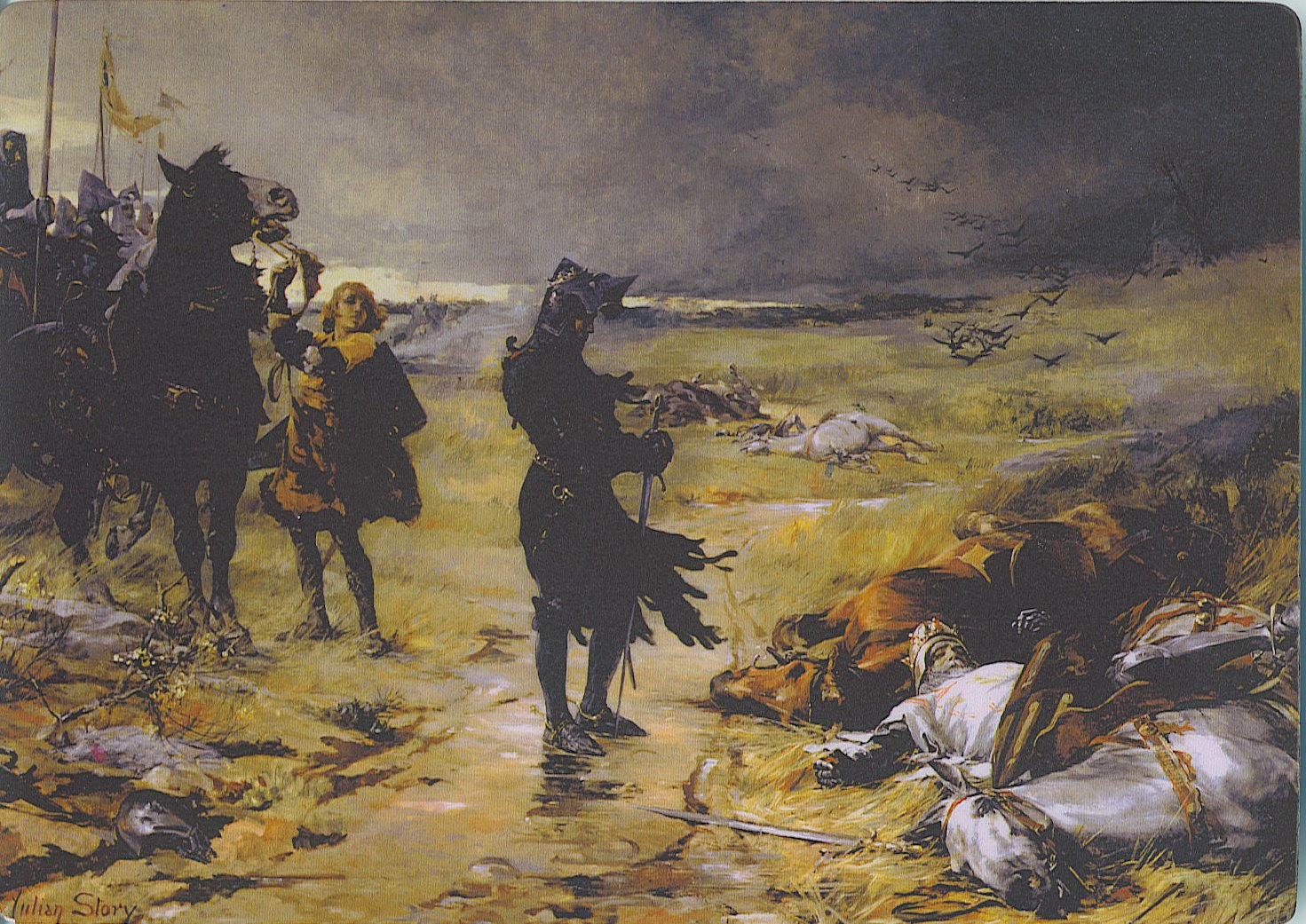 Julian Russell Story, Wikimedia Commons
Julian Russell Story, Wikimedia Commons
46. Test Run Babies
As with many medieval princes of his era, Edward “got around” before his marriage to Joan of Kent. This sowing of wild oats is evidenced by the four illegitimate children he produced throughout the 1350s. Only one rose to any historical prominence: Sir Roger Clarendon, who is also best remembered for being hanged and beheaded for treason by Henry IV.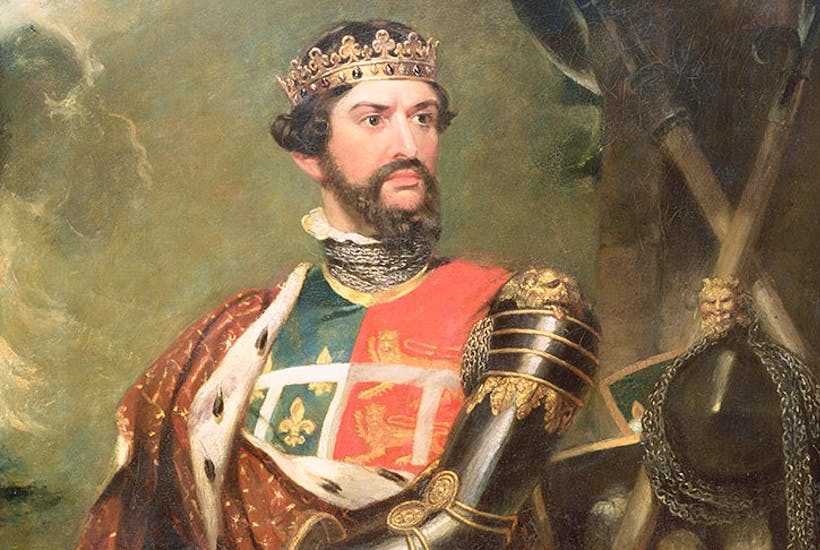 Robby Copeland, CC BY-SA 4.0, Wikimedia Commons
Robby Copeland, CC BY-SA 4.0, Wikimedia Commons
47. This Time It’s Personal
Edward lost one of his good friends during the siege upon Romorantin in 1356. Enraged, the prince reportedly intensified his efforts and set the whole fortress aflame with Greek fire.
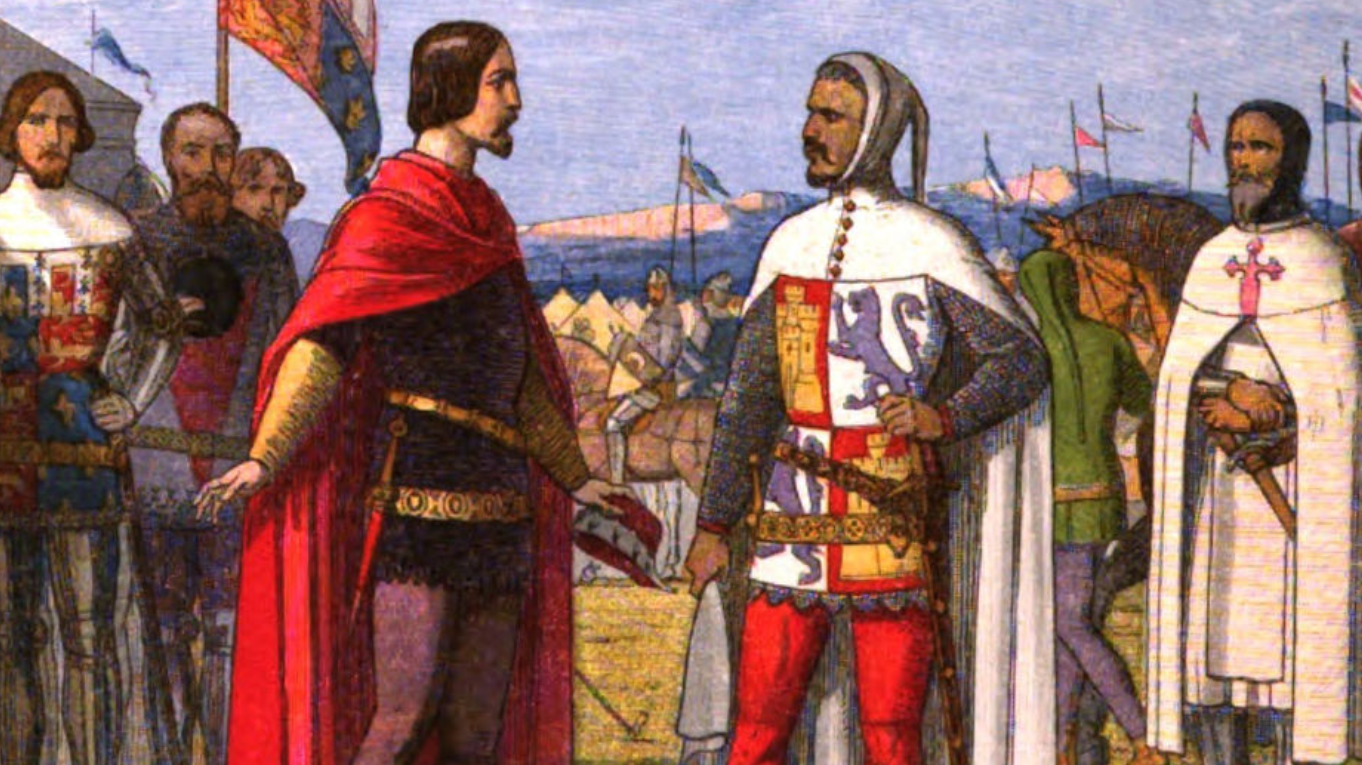 James William Edmund Doyle, Wikimedia Commons
James William Edmund Doyle, Wikimedia Commons
48. Deadly Threads
Edward was laid to rest with his battle swag: his surcoat, helmet, shield, and gauntlets were preserved for longevity in bronze. Today, these tokens remain kept in glass at Canterbury Cathedral, where he is buried.
 Jononmac46, CC BY-SA 4.0, Wikimedia Commons
Jononmac46, CC BY-SA 4.0, Wikimedia Commons
49. This is Why You Wash
The Black Prince’s armor might never have been black at all. Over time, and due to damaging sun rays, the bronze medieval armor in his tomb took on an ominous black patina. Some say this led to misconceptions about the color of his character (and outfits) and perhaps even led to his posthumous nickname. Talk about letting your outfit speak for you.
 https://www.onthisday.com/people/edward-the-black-prince, Wikimedia Commons
https://www.onthisday.com/people/edward-the-black-prince, Wikimedia Commons
50. One Powerful Lady
Mochizuki Chiyome was one of the most famous female ninjas of her time. So the legend goes, she managed to recruit 300 women to form an underground espionage training operation. On the surface, it seemed that Mochizuki was running an orphanage for young women, but she was really training ninjas assassins and spies.
 Lotte Entertainment, The Pirates (2014)
Lotte Entertainment, The Pirates (2014)
51. Making That Cheddar
The illegitimate children of Pope Alexander VI—also known as Rodrigo Borgia—have enough scandal to fill their own article. But for now, we’ll just mention his most famous natural daughter Lucrezia Borgia, who allegedly dabbled in poisons. However, Lucrezia was also involved in the less nefarious world of mozzarella cheese production. Hey, not unlike ogres, Borgia's lovechildren have layers.
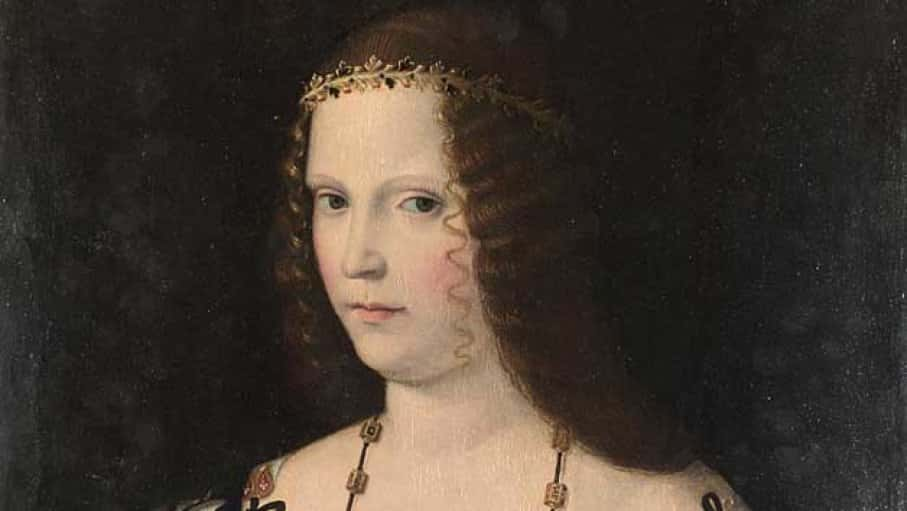 Bartolomeo Veneto, Wikimedia Commons
Bartolomeo Veneto, Wikimedia Commons
52. If
In the fourth century BC, Philip II of Macedon campaigned against the Greek city-states. Having conquered most of southern Greece, he sent a message to Sparta, which read, “You are advised to submit without further delay, for if I bring my army into your land, I will destroy your farms, slay your people, and raze your city". The Spartans replied with a single word: “If". Suffice it to say, Philip did not attack Sparta.
 John Steeple Davis, Wikimedia Commons
John Steeple Davis, Wikimedia Commons
53. O Brother, Who Ended Thou?
On June 14, 1497, Cesare Borgia’s brother Giovanni was slain. He was last seen with Cesare and the rest of the siblings in their mother’s home. Giovanni then departed and was never seen alive again. The next morning, his horse returned home riderless. He was later found in the Tiber River, having had his throat slit, along with nine other stab wounds.
 Atlantique Productions, Borgia (2011–2014)
Atlantique Productions, Borgia (2011–2014)
54. Did Someone Interrogate the Butler?
In the aftermath of his brother’s murder, Borgia’s father, Pope Alexander VI was devastated, and insisted on a thorough investigation into the murder. However, just a week into the case, the Pope called the whole thing off. This might seem suspicious for a man whose son was slain and who had the power of the Church behind him, but with the Borgias, things were never so simple.
Both Giovanni and Cesare had been having affairs with their brother Gioffre's wife Sancha. That meant that both of the Pope's surviving sons were suspects in his deceased son's murder. No wonder he called off the dogs.
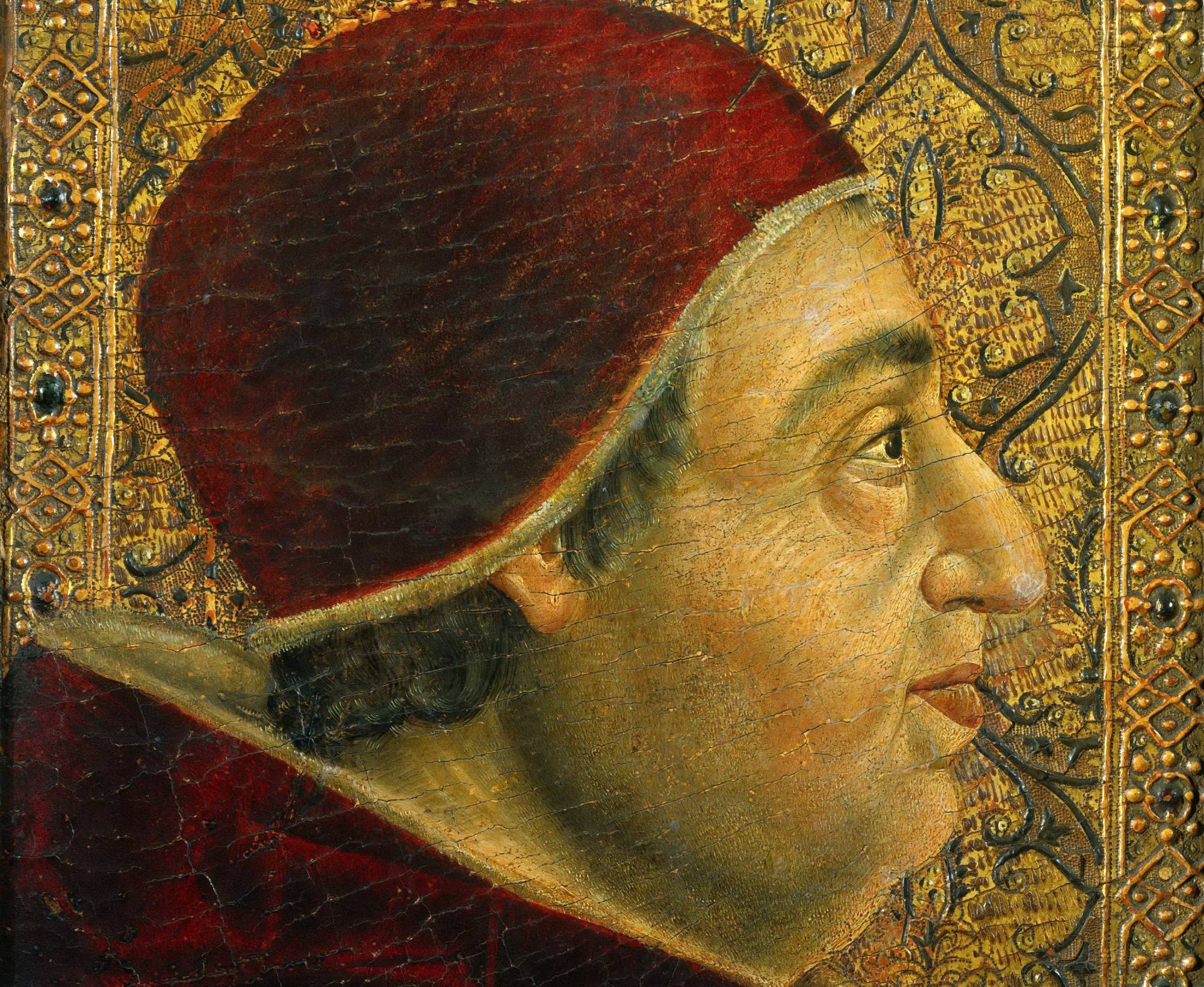 Pedro Berruguete, Wikimedia Commons
Pedro Berruguete, Wikimedia Commons
55. My Brother’s Gone, I Quit
One other reason why Cesare Borgia might have had a hand in slaying his brother is the fact that Giovanni was being groomed for command by Pope Alexander VI, their father. Indeed, because nepotism was entirely the way that Borgia’s family rolled, Giovanni had been given the rank of captain-general over the papacy’s armed forces.
Just over a year after his brother’s murder, Cesare Borgia became the first man in history to resign his position as a cardinal, and became more involved in the army.
 Bartolomeo Veneto, Wikimedia Commons
Bartolomeo Veneto, Wikimedia Commons
56. Feast of the Chestnuts
Before Cesare Borgia’s wild lifestyle caught up with him, leaving him ravaged by syphilis, he was known to have sensual parties at the Vatican, where guests would be encouraged to make use of the “fifty honest [courtesans]” who had been invited. The Banquet of Chestnuts, as it was known, was a massive feast and carnal marathon that took place in October 1501.
The pope himself was said to be in attendance, and prizes were given to those who could "perform the act most often with the courtesans".
 Altobello Melone, Wikimedia Commons
Altobello Melone, Wikimedia Commons
57. Warrior Queen
Boudicca was a Celtic queen of the Iceni tribe who led an uprising against the occupying Roman Empire around 60 AD when their lands were taken by the Romans and they were no longer treated as allies. Indeed, after Boudicca's husband perished, the Romans sensed the power vacuum, took her lands, and defiled her and her daughters.
Not one to sit back and let the Romans walk all over her, Boudicca went on the attack. She was eventually defeated in the Battle of Watling Street, but not before causing catastrophic damage to her enemies, slaughtering 80,000 roman forces. An inspiration to the British for millennia, Boudicca is still remembered as an ideal image of a warrior queen.
 Bleiberg Entertainment, Boudica (2023)
Bleiberg Entertainment, Boudica (2023)
58. She’s Kind of Scary
Based on descriptions of Boudicca by ancient historians, she was a pretty terrifying figure. She was described as being of above average height, having a “piercing gaze,” waist-length fire-red hair, a harsh voice, and possessing a “greater intelligence than often belongs to women". OK, not the greatest compliment, but from an ancient historian, that was about as good as it gets for a woman.
 Bleiberg Entertainment, Boudica (2023)
Bleiberg Entertainment, Boudica (2023)
59. Using Her Smarts
According to some historians, the main reason that Boudicca was able to accomplish as much as she did was because of her keen intelligence. I’m sure that this wasn’t the only reason, but could an idiot have rallied and led an army well enough to level three Roman cities and kill 80,000 Romans? Probably not!
 History Channel, Barbarians Rising (2016)
History Channel, Barbarians Rising (2016)
60. Women Rule!
Boudicca’s legend was seen by the Romans as a cautionary tale for what happens when women are allowed to rule, but two British queens took a different view of the story. In the 16th century, Queen Elizabeth I used it to solidify her own rule and to demonstrate that a strong British Queen fighting a foreign power wasn’t without precedence. In the 19th century, Queen Victoria saw herself as her namesake, and also used the story as proof of her own right to hold power.
 History Channel, Barbarians Rising (2016)
History Channel, Barbarians Rising (2016)
61. Lesson Learned
When Boudicca launched her rebellion, the Romans were basically caught with their pants down, but nobody can say they didn’t take anything away from it. They swore that they’d never allow anything like Boudicca’s slaughter to happen again, and after her defeat, they took steps to strengthen their settlements and protect themselves against any possible future uprisings. Fool me once, right?
62. Chicken or Egg?
How Boudicca met her end still remains something of a mystery. According to Tacitus, she swallowed poison when she realized that she had no chance of winning the final battle, but Dio suggested that she was sick. On the other hand, it has also been suggested that if she was sick, it could have been from the poison, so it kind of brings everything full circle.
 Bleiberg Entertainment, Boudica (2023)
Bleiberg Entertainment, Boudica (2023)
63. Fate Worse Than Dying
Though nobody knows exactly what happened to Boudicca and her daughters after the defeat, historians generally agree that however they perished, it was better than what would have happened if they’d been captured by the Romans. First, they would have been marched through the streets in a Roman victory parade, and then they would have been tortured and had their bodies displayed for the crowds.
 History Channel, Barbarians Rising (2016)
History Channel, Barbarians Rising (2016)
64. Uncharacteristic Ornament
Celtic warrior chieftains of the time wore a piece of jewelry known as torque (torc) around their necks. The necklace was a metal band made most often with twisted strands of gold and decorative knobs at the throat. The necklace wouldn’t have typically been worn by a woman, but if one historian's description of Boudicca is accurate and she did wear one, it was a pretty major statement of her power.
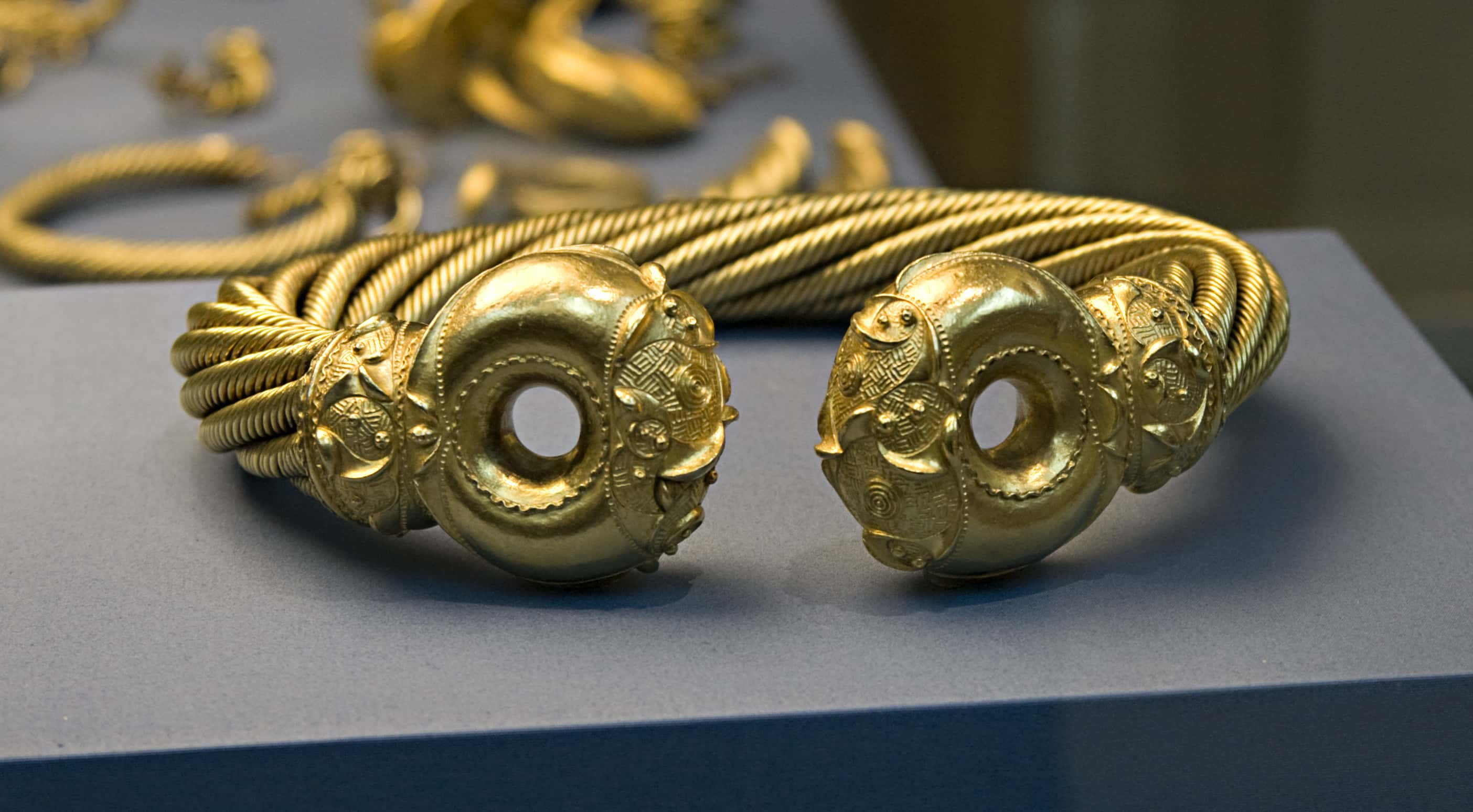 British Museum, CC BY-SA 3.0 , Wikimedia Commons
British Museum, CC BY-SA 3.0 , Wikimedia Commons
65. Them’s Fighting Words
Before leading her warriors to battle, Boudicca reportedly gave a rousing speech worthy of Braveheart. She said: “I’m not fighting for my kingdom and wealth. I am fighting as an ordinary person for my lost freedom...Consider how many of you are fighting—and why. Then you will win this battle, or perish. That is what I, a woman, plan to do! Let the men live in slavery if they will".
 History Channel, Barbarians Rising (2016)
History Channel, Barbarians Rising (2016)
66. No Regrets
Henry VIII's fifth wife Catherine Howard was executed on February 13, 1542. Unlike her cousin, Anne Boleyn, Catherine Howard remained indignant to the very end. Her last words, supposedly, were “I die a queen, but would rather have died the wife of a Culpeper,” in reference to her adulterous lover. How…sweet?
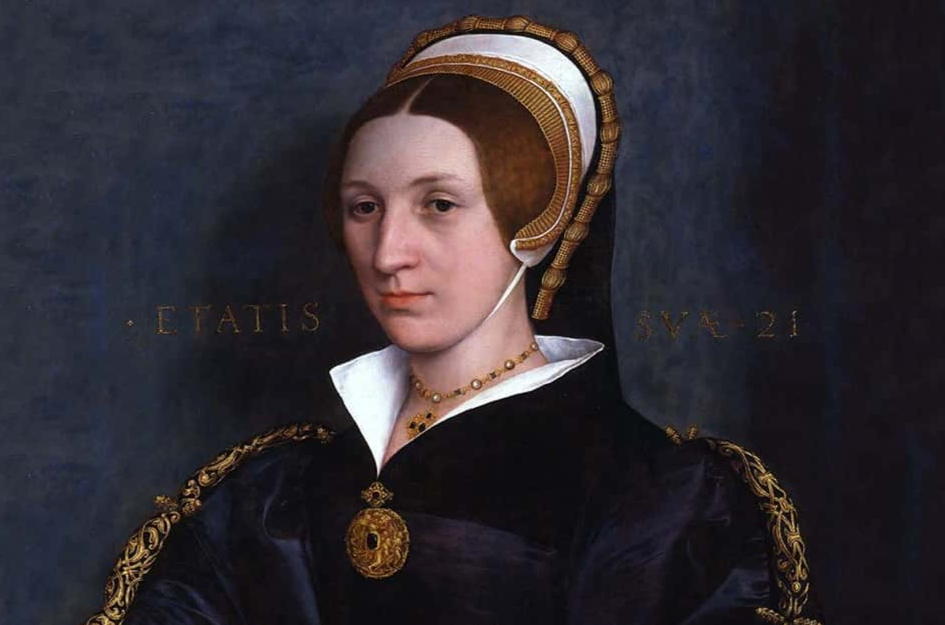 Hans Holbein the Younger, Wikimedia Commons
Hans Holbein the Younger, Wikimedia Commons
67. Scorn in the Face of Dying
During WWII, the Netherlands was occupied by Germany. Many Dutch people began a Resistance against the Germans, including one Hannie Schaft. She helped Jewish people get their hands on fake IDs until she was apprehended and sentenced to die. When the firing squad failed to kill her with the first round, she scornfully declared “I could shoot better!” Why she doesn’t have a movie about her based on those last words alone is beyond us.
 Unknown Author, Wikimedia Commons
Unknown Author, Wikimedia Commons
68. Good Enough to Kiss, Not to Bury
Some carry their grief with them everywhere. In the case of Queen Joanna of Castile, this was not just a metaphor. Taking the demise of her beloved husband Phillip the Handsome really hard, Joanna had her late hubby dug up and his coffin opened several times to kiss his beloved (decaying) face. From that moment on, she brought his coffin with her everywhere, even her bed.
Only years later did she return Philip to the ground—burying him right outside her window.
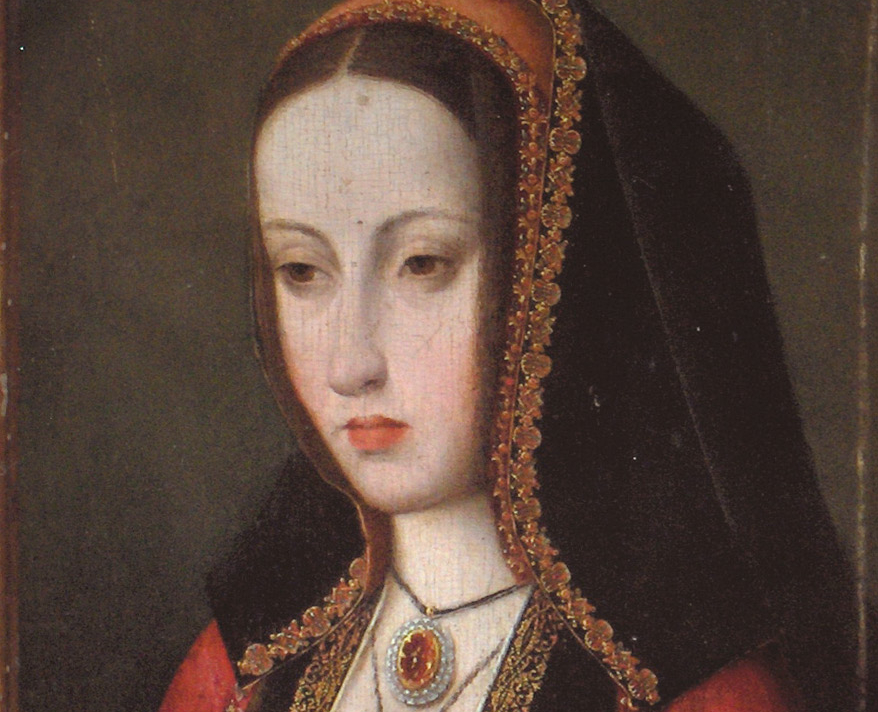 Master of Affligem, Wikimedia Commons
Master of Affligem, Wikimedia Commons
69. The Butcher of Belgium
King Leopold of Belgium, recently inserted into the Legend of Tarzan film, is best known for creating the Congo Free State, which was a project to extract rubber and ivory from the Congo region in Africa. Under the pretense of missionary work, for two decades, he enslaved the people of the Congo, slaughtering and torturing between 8 and 12 million in the late 1800s. Thanks to his exploitation of the Congolese people, he was at one time believed to be the richest man in the world, with a personal fortune between $100 and $500 million.
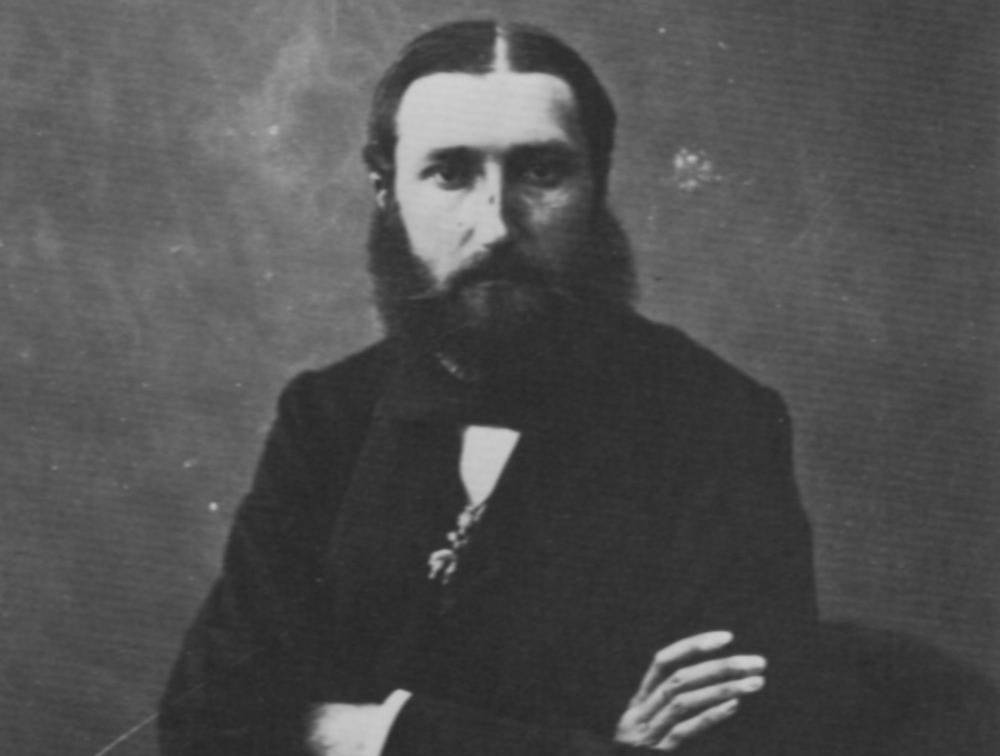 Atelier Nadar, Wikimedia Commons
Atelier Nadar, Wikimedia Commons
70. You Asked for It!
In 493 BC, Emperor Xerxes demanded the tribute of earth and water from the island of Cos, but its people refused to submit to the Persian King. Enraged, Xerxes sent Artemisia of Caria, the Pirate Queen of Ancient Greece and one of his most trusted generals, to lead the Persian fleet in a bloody conquest of the island.
71. A Celebration You Won’t Forget!
Another instance of Artemisia's cunning being put to devastating use was given to us by 2nd-Century historian Polyaenus. Artemisia was hoping to conquer the city of Latmus, so she held a huge party just beyond the city. Naturally, all the commotion caused the city’s inhabitants to wander over, and when enough people did so, Artemisia launched her sneak attack when everyone’s guard was down!
 Warner Bros., 300: Rise of an Empire (2014)
Warner Bros., 300: Rise of an Empire (2014)
72. Maybe Rethink This?
Artemisia was the only commander in the Persian fleet to advise Xerxes that a naval battle must be avoided. She was smart enough to realize that the Greeks were strong in the waters of their home shores, and she was convinced that they could hold their own, even when they were outnumbered. If anyone else shared her doubts, we don’t know about them, because Artemisia was allegedly the only person bold enough to say anything contrary to Xerxes’ intentions.
Though Xerxes admired and respected Artemisia for her blunt honesty, he ignored her advice and sent the fleet to pursue the Greeks.
 Warner Bros., 300: Rise of an Empire (2014)
Warner Bros., 300: Rise of an Empire (2014)
73. One for Every Spartan?
Sadly, for Artemisia, she was proven right when the Persian fleet was lured into a trap, and the Greek ships crushed their enemies. Led by Themistocles, the Greeks lost 40 ships, while up to 300 ships were lost by the Persians.
 Warner Bros., 300: Rise of an Empire (2014)
Warner Bros., 300: Rise of an Empire (2014)
74. Taking Rejection Badly
The context of Artemisia’s demise remains unknown, though a legend was taken down by Photius, a writer from the 9th century AD. Near the end of her life, Artemisia supposedly fell in love with a prince named Dardanus, but he refused her advances and didn’t reciprocate her feelings. Enraged, Artemisia allegedly blinded Dardanus while he was still asleep, then threw herself into the sea. Today, this is believed to be an apocryphal story, as it conflicts with everything we know about the cunning and capable Pirate Queen.
 Warner Bros., 300: Rise of an Empire (2014)
Warner Bros., 300: Rise of an Empire (2014)
75. With Friends Like These
Sir Walter Raleigh’s good friend Lawrence Keymis was principally responsible for Raleigh’s execution. During Raleigh’s second voyage to Guiana (as it was spelled then), Keymis was put in charge of a detachment of men. When Keymis and his men stumbled upon a Spanish outpost, they engaged, against the orders of Raleigh, who was ordered to avoid conflict with the Spanish at all costs. When word got back to Spain about what had happened, they were utterly furious, and they demanded that Raleigh be executed.
Not wanting to cause a stink, King James I of England complied and had Raleigh executed.
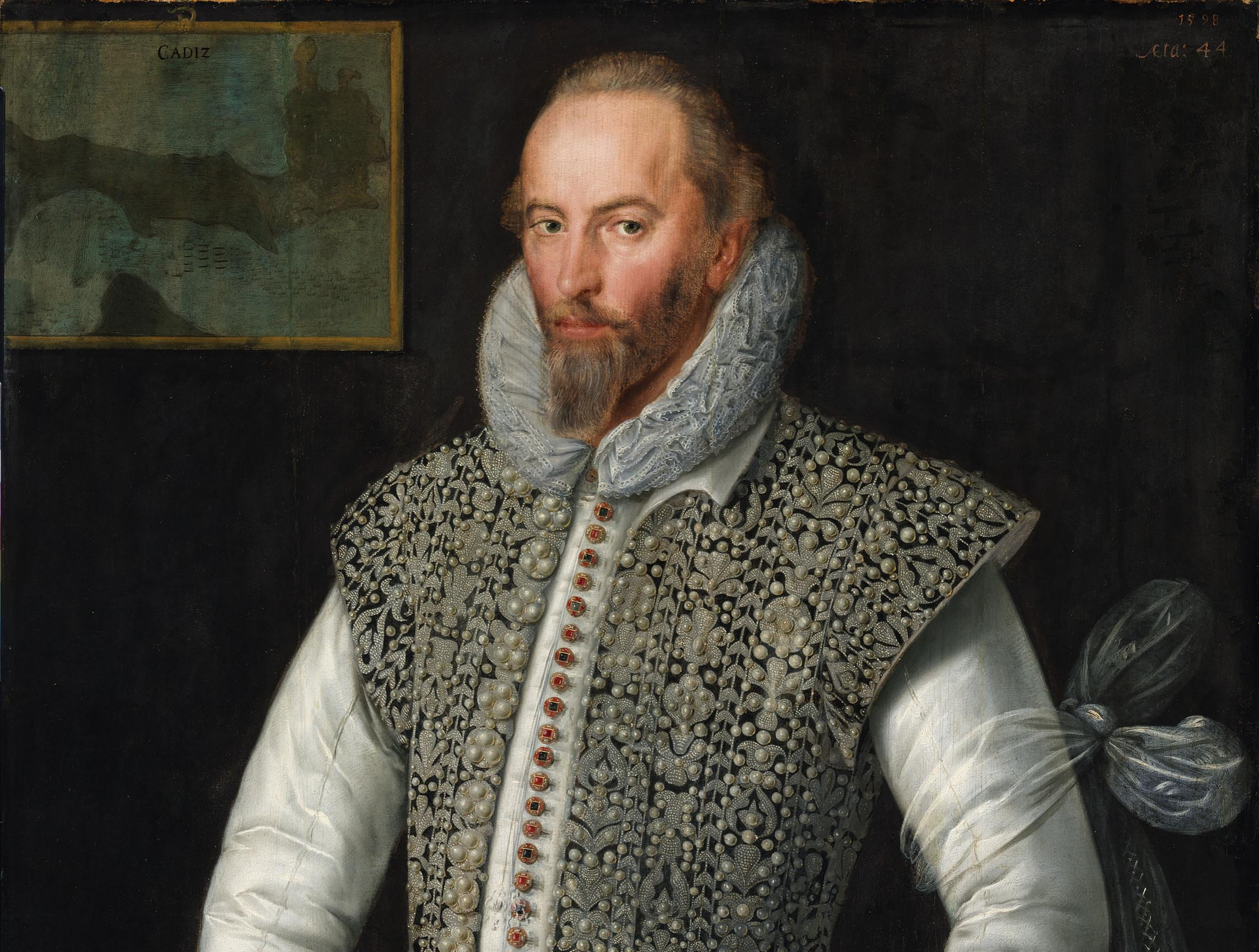 William Segar, Wikimedia Commons
William Segar, Wikimedia Commons
76. Friendly Fire
Not only did Lawrence Keymis cause his friend Raleigh to be executed for attacking the Spanish in Guiana, but he was also responsible for the demise of Raleigh’s son, also named Walter. Keymis led his men on an ambush of a Spanish outpost in South America against Raleigh's wishes, and the young Walter was one of the troopers under his command. During the assault, Walter was shot, and he later succumbed to the wound. Keymis begged Raleigh for forgiveness, but it never came.
Keymis took his own life shortly thereafter.
 Universal, Elizabeth: The Golden Age (2007)
Universal, Elizabeth: The Golden Age (2007)
77. Eat Your Heart out, Dad!
The future King Peter I of Portugal was deeply in love with Inês de Castro, to the point where he neglected his own wife and endangered his country's international alliances. Infuriated, Peter’s father, King Alfonso IV, sent three men to decapitate Inês. In revenge, the heartbroken Peter found two of her killers and had their hearts viciously ripped from their bodies—they had ripped out his heart, so he did the same to them.
He then exhumed Inês' body, placed her on a throne, and forced his entire kingdom to bow before her lifeless body and kiss her hand.
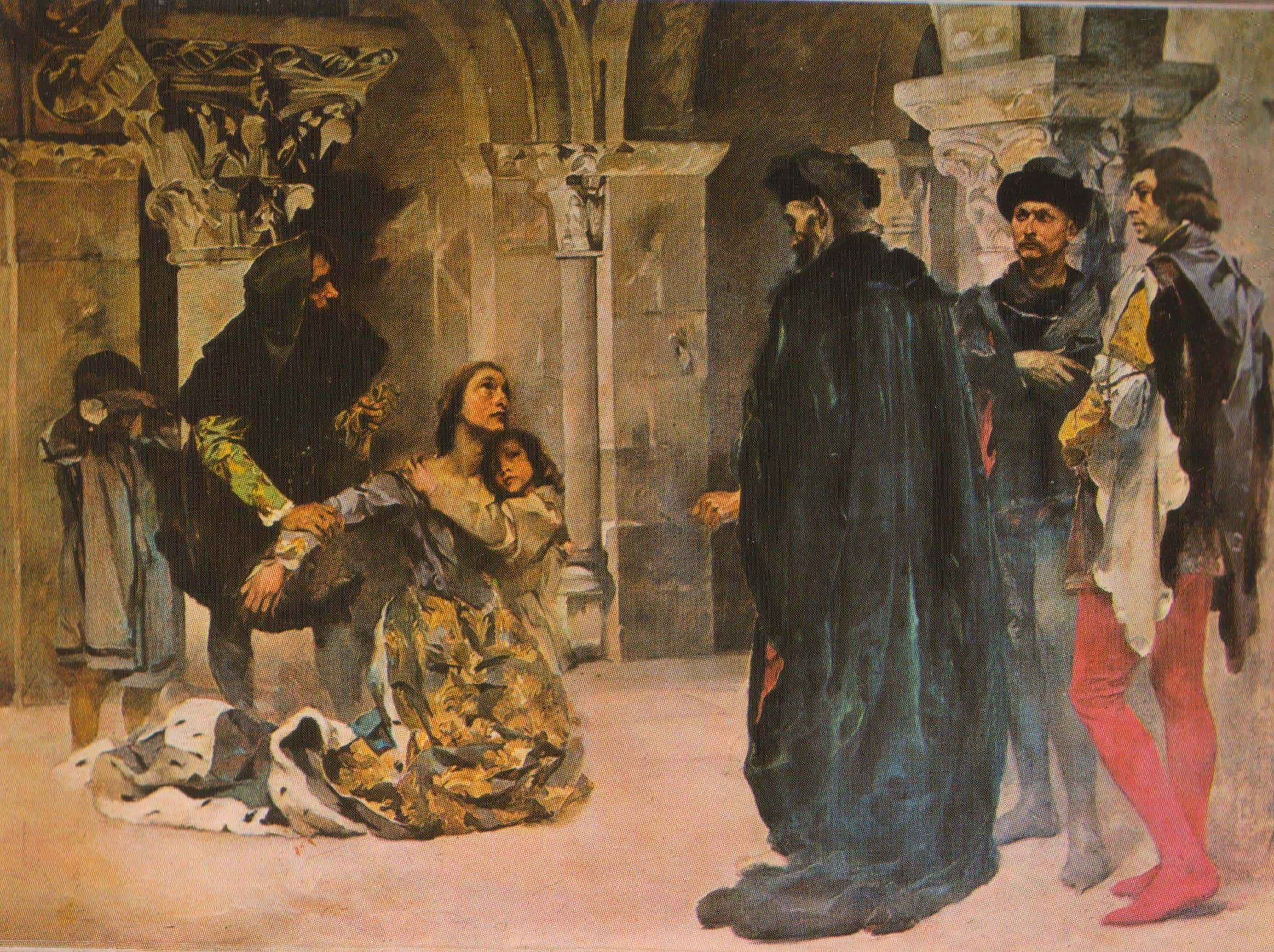 Columbano Bordalo Pinheiro, Wikimedia Commons
Columbano Bordalo Pinheiro, Wikimedia Commons
78. Hard Labor
Anne, Queen of Great Britain had the hardest of times when it came to motherhood. She was pregnant 17 times over the course of 17 years, and only once did she give birth to a child who made it past the age of two. She miscarried a staggering 12 times, and four of her children perished while still infants. Some medical historians suggest her terrible luck at parenthood was because she suffered from Hughes syndrome, an autoimmune disease that creates frequent blood clots.
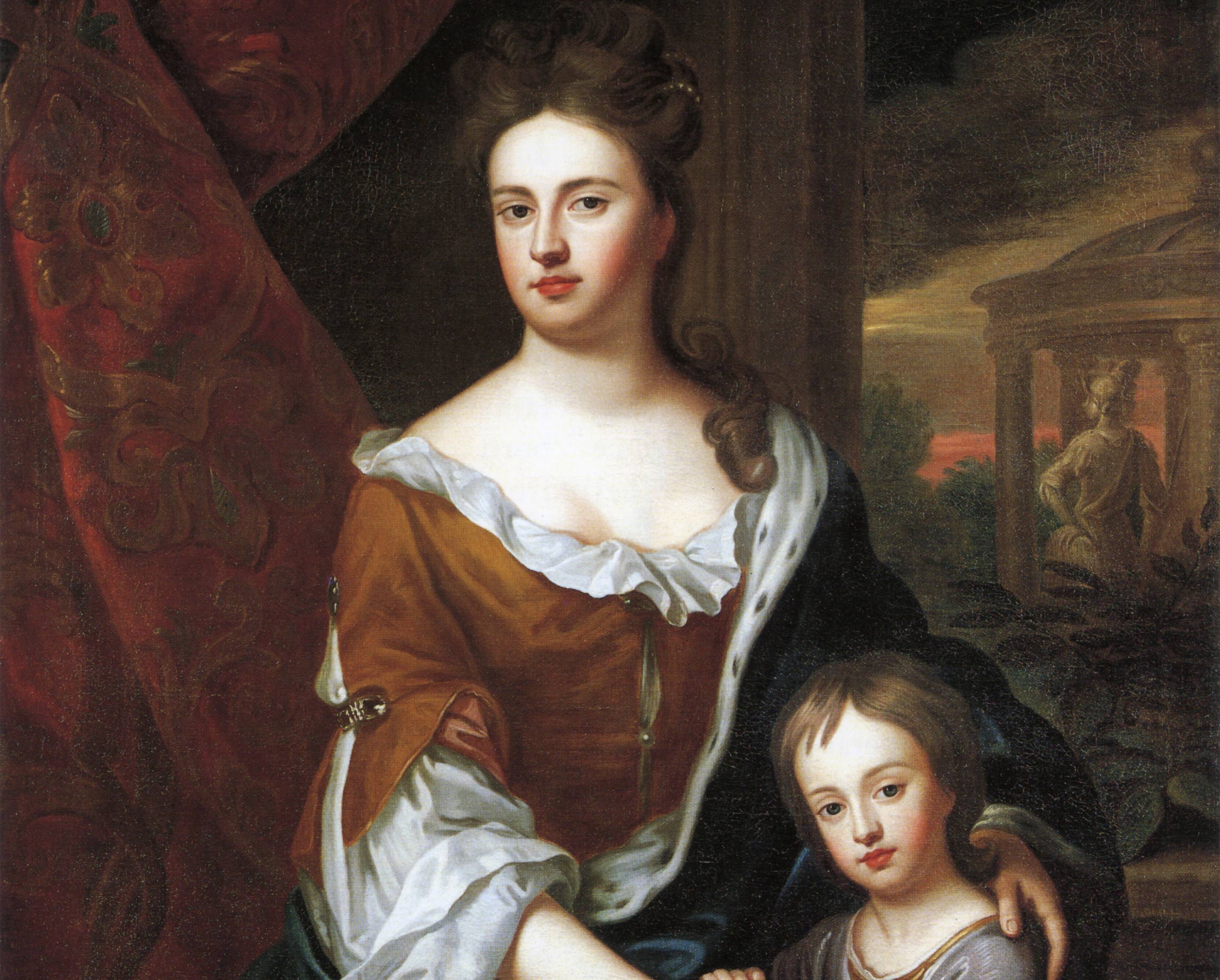 Godfrey Kneller, Wikimedia Commons
Godfrey Kneller, Wikimedia Commons
79. The Final Square off
Afflicted with gout and dropsy, Queen Anne could barely walk by the last years of her life. Her body was so bloated, her royal coffin was shaped like a square.
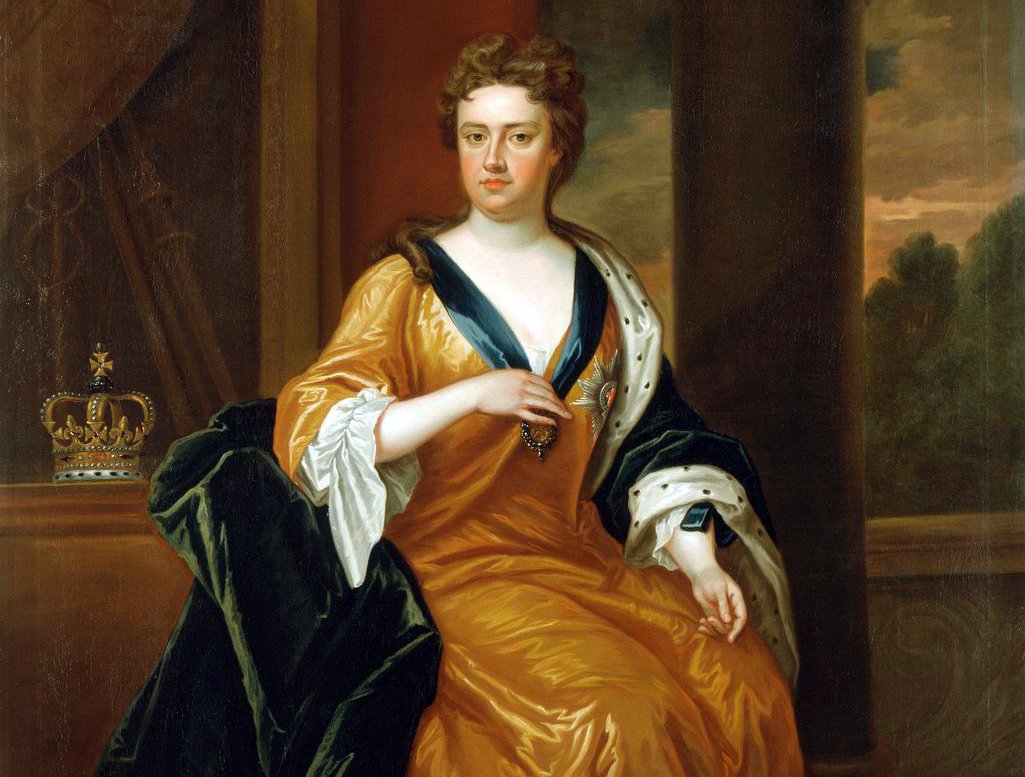 Charles Jervas, Wikimedia Commons
Charles Jervas, Wikimedia Commons
80. A Woman Scorned
Not all women need protecting. History shows some female knights who stood their ground and fought alongside the men. Case in point: Countess Petronella of Leicester and Nicolaa de la Haye. Countess Petronella fought with her husband against Henry II, while de le Haye fought alongside William Marshal against the French.
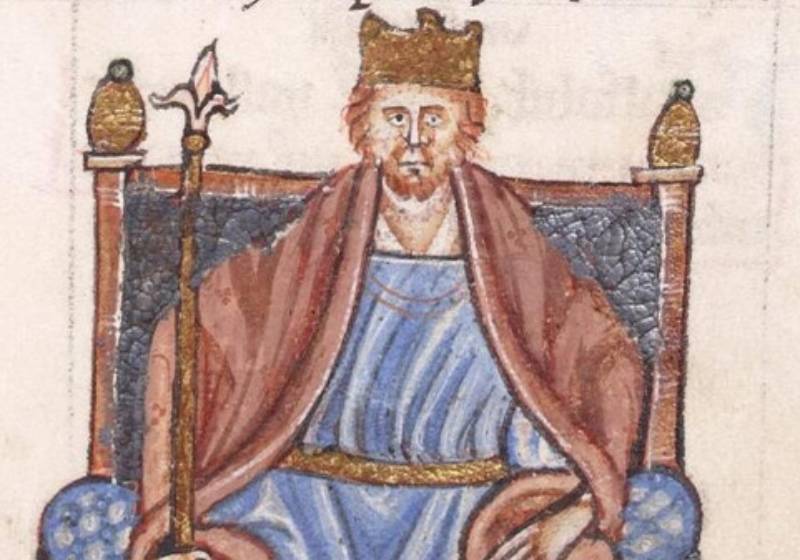 Gerald of Wales, Wikimedia Commons
Gerald of Wales, Wikimedia Commons
81. Not Quite a Lady
Though she grew up in luxury, Ada Lovelace somehow missed the memo on female decorum. One gossip rag at the time described her as “the most coarse and vulgar woman in England,” a title that her libertine father, Lord Byron, probably would have admired.
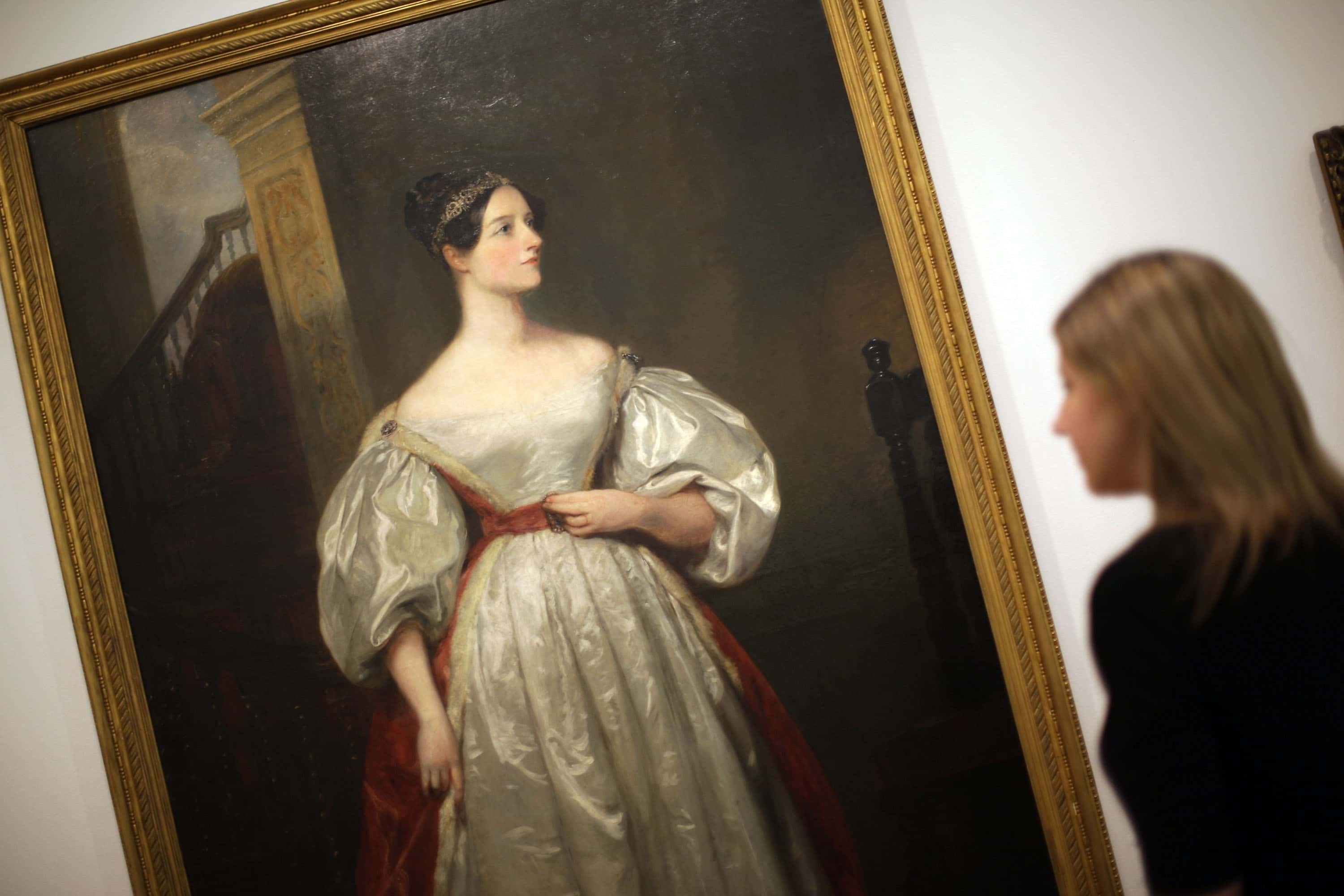 Peter Macdiarmid, Getty Images
Peter Macdiarmid, Getty Images
82. The First in Theory
Lovelace is credited with the first published algorithm ever programmed specifically for computer implementation. However, it was only ever theoretical and never put to the test in real life. For this, and her work with Charles Babbage, she's known as the first ever computer programmer.
83. Made for RAM, Not the Runway
Contrary to those ladylike engravings of Lovelace, our favorite mathematician was not a fashionista. In fact, she had an infamously drab sense of fashion. Even her housekeeper once described her as “not so well dressed as her maid". People often couldn’t believe the too-glam-for-his-own-good Lord Byron fathered such a dull child.
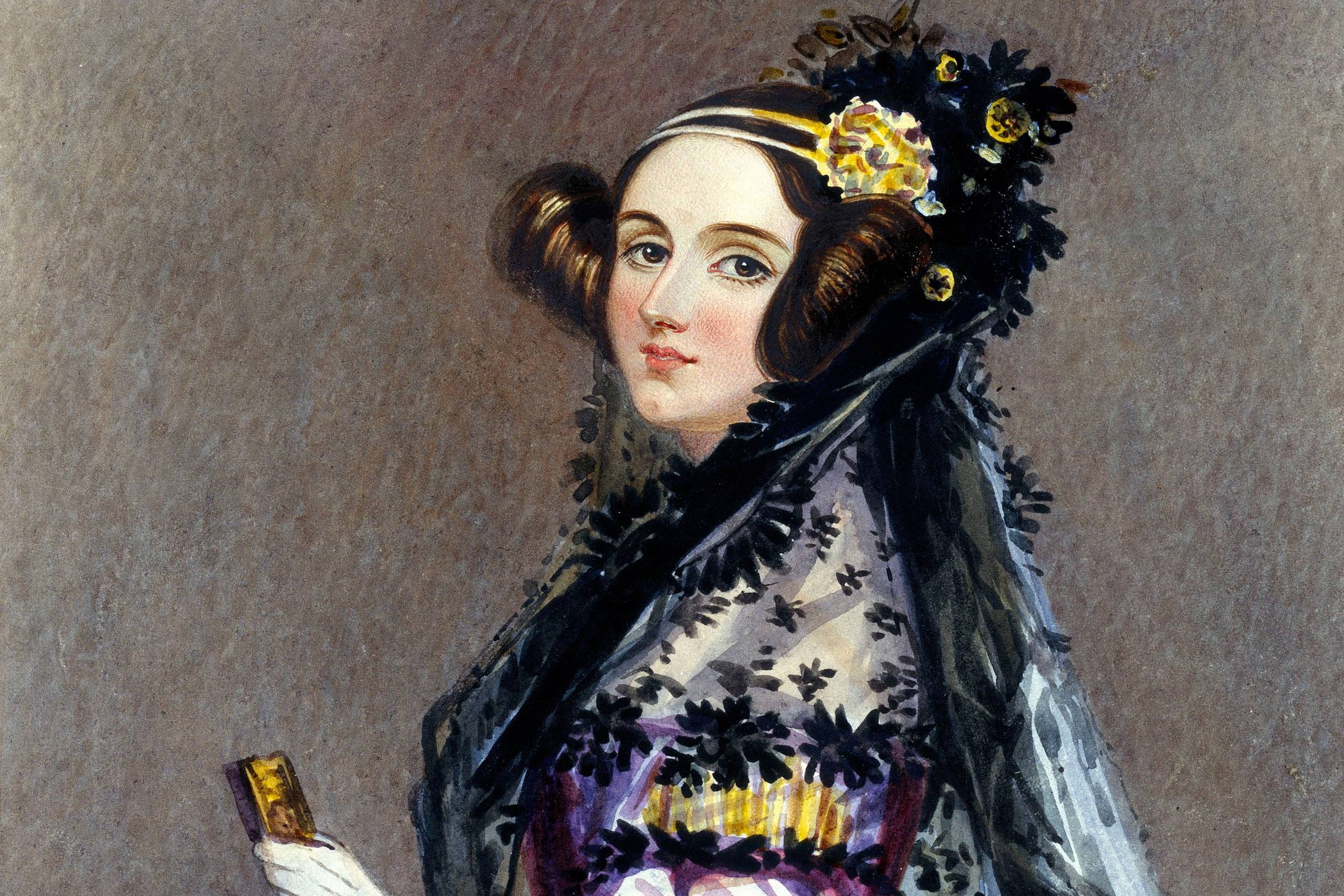 Alfred Edward Chalon, Public domain, via Wikimedia Commons
Alfred Edward Chalon, Public domain, via Wikimedia Commons
84. Opium Haze
Lovelace spent most of her adult life on laudanum (an opium tincture) for her various ailments, and she was seriously addicted. If she didn’t have it, she’d experience withdrawal symptoms such as extreme stress and itchy eyeballs. As soon as she was able to have some, the symptoms relaxed, and she was basically back to normal.
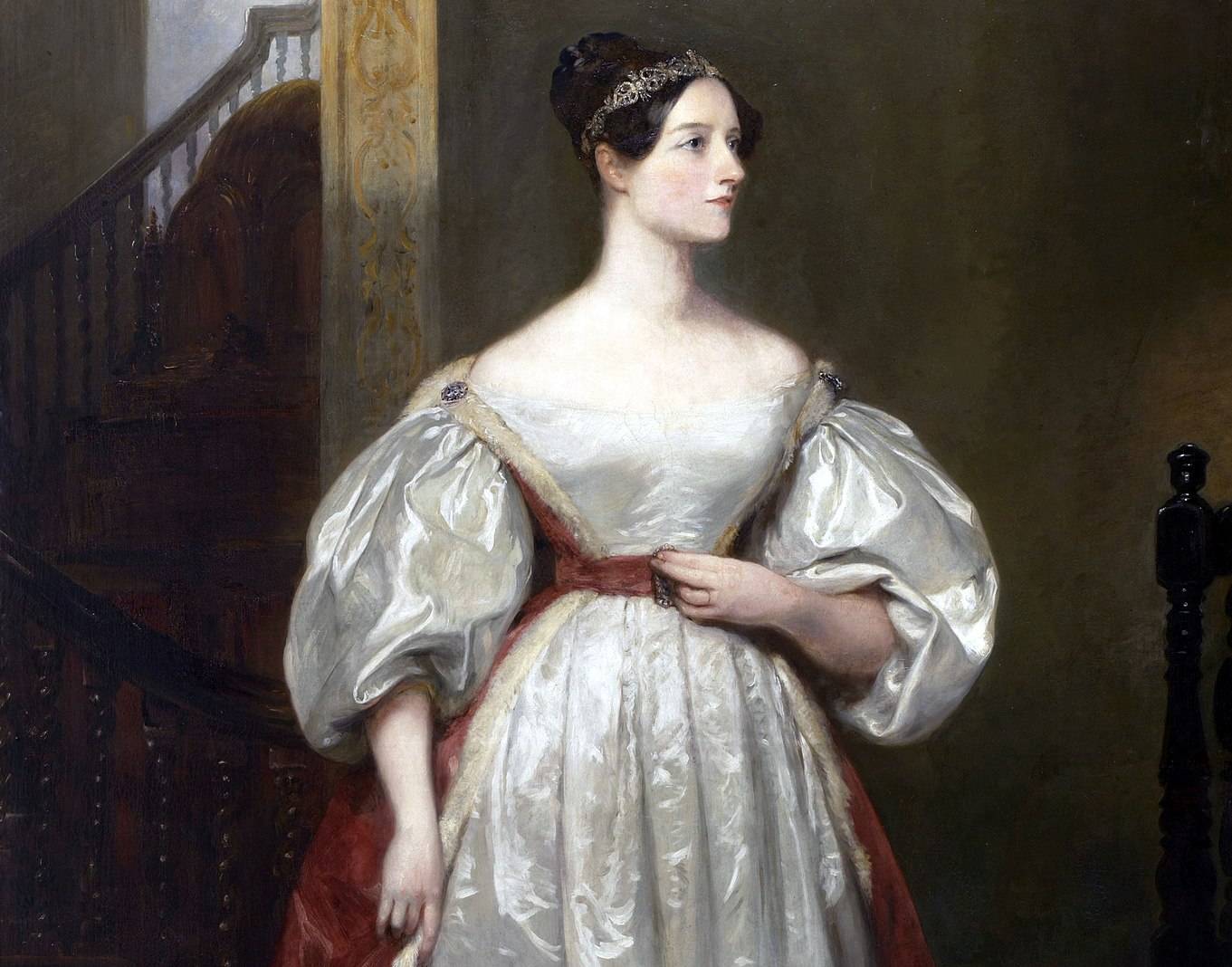 Margaret Sarah Carpenter, Wikimedia Commons
Margaret Sarah Carpenter, Wikimedia Commons
85. The Family that Sticks Together Is Never Surprised
In 1841, Lady Byron informed Ada that she and her cousin Medora were, in fact, half-siblings. To put it simply (and grossly), Lovelace’s scandalous father might have had an affair with his own half-sister. By our standards, Lovelace underacted to this taboo revelation, writing to her mom, “I am not in the least astonished. In fact, you merely confirm what I have for years and years felt scarcely a doubt about but should have considered it most improper in me to hint to you that I in any way suspected".
In short, she was not surprised. But...how??
 Henry Phillips, Wikimedia Commons
Henry Phillips, Wikimedia Commons
86. Honor Thy Father…in Everything
When confronted with her late father’s alleged relations with his own half-sister, Lovelace put all the blame on Medora's mother, Augusta Leigh. She wrote, “I fear she is more inherently wicked than he [Byron] ever was". Even smart people have double standards, I guess.
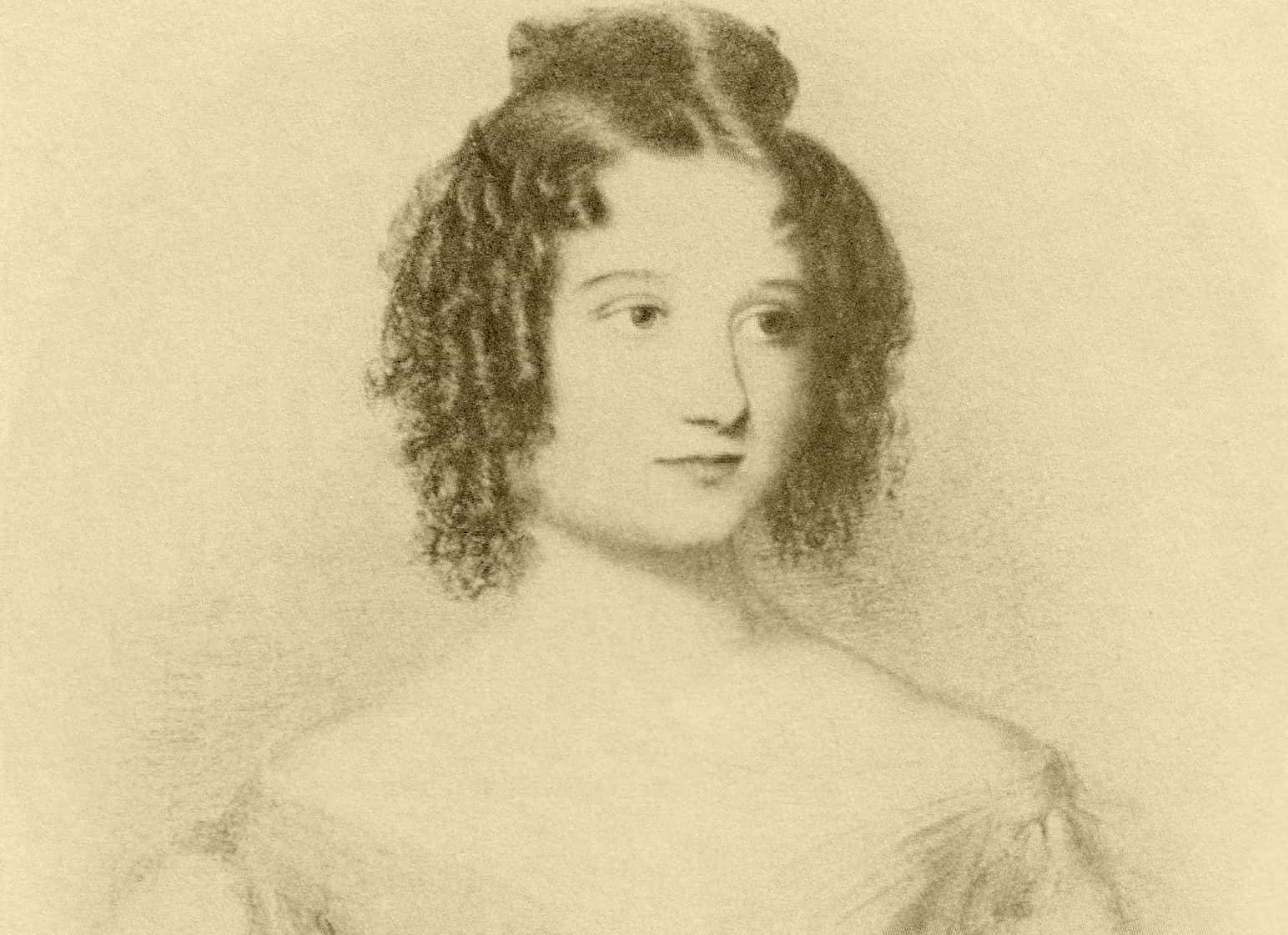 Unknown Author, Wikimedia Commons
Unknown Author, Wikimedia Commons
87. A Role Model in Every Way
On 27 November 1852, Ada Byron Lovelace perished at the same age of her absent and infamous father Lord Byron. She was just 36, and passed from uterine cancer, which was probably made worse by the common practice of bloodletting. You can always trust a Byron to go out dramatically.
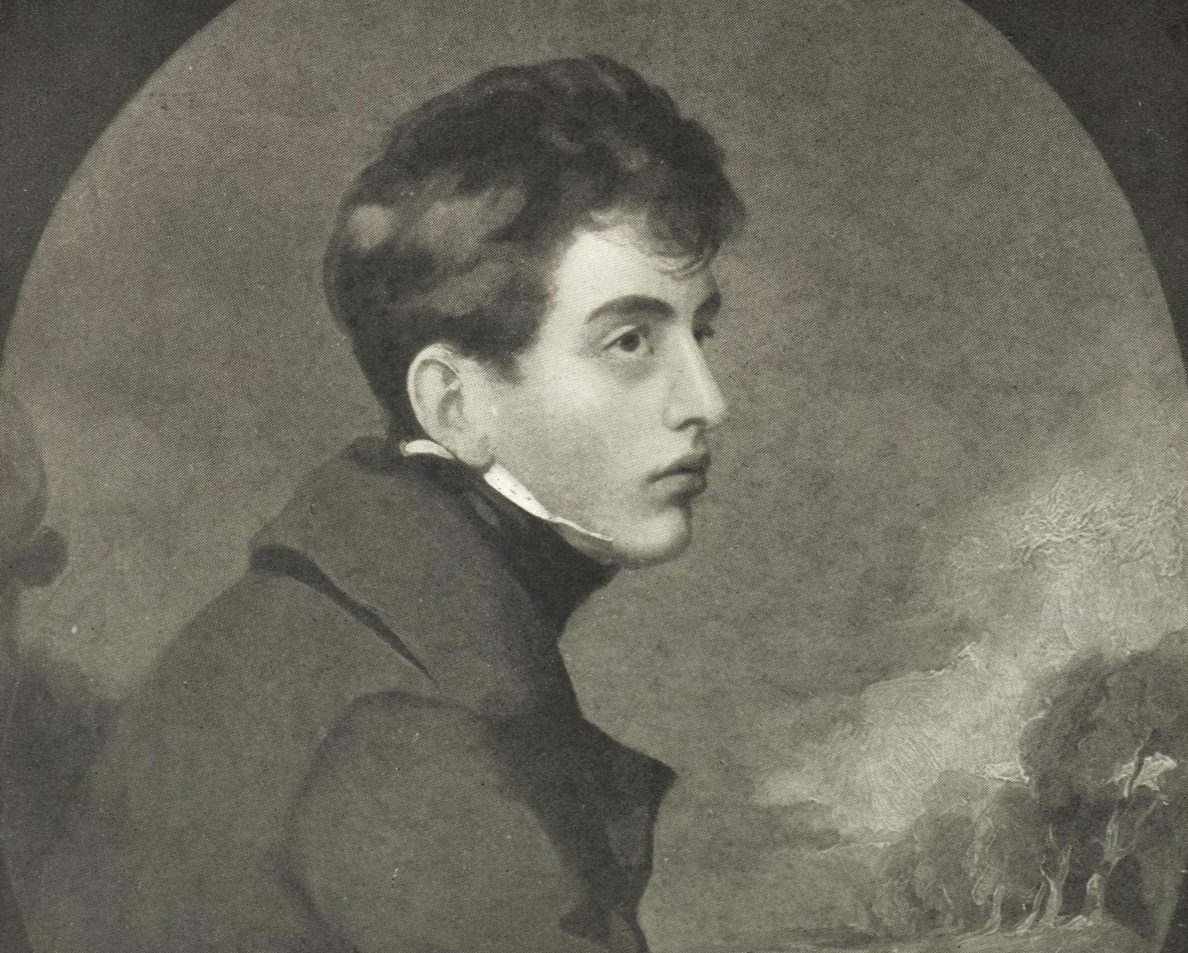 Welsh Portrait Collection, Wikimedia Commons
Welsh Portrait Collection, Wikimedia Commons
88. Some Things Can’t Be Forgiven
For mysterious reasons, Ada’s husband William abandoned his wife’s deathbed. She had confessed something to Lord Lovelace that led him to stalk out and never return after August 30, 1852. Historians can suppose it was about her many infidelities or the truth about her sister Medora. However, we may never know.
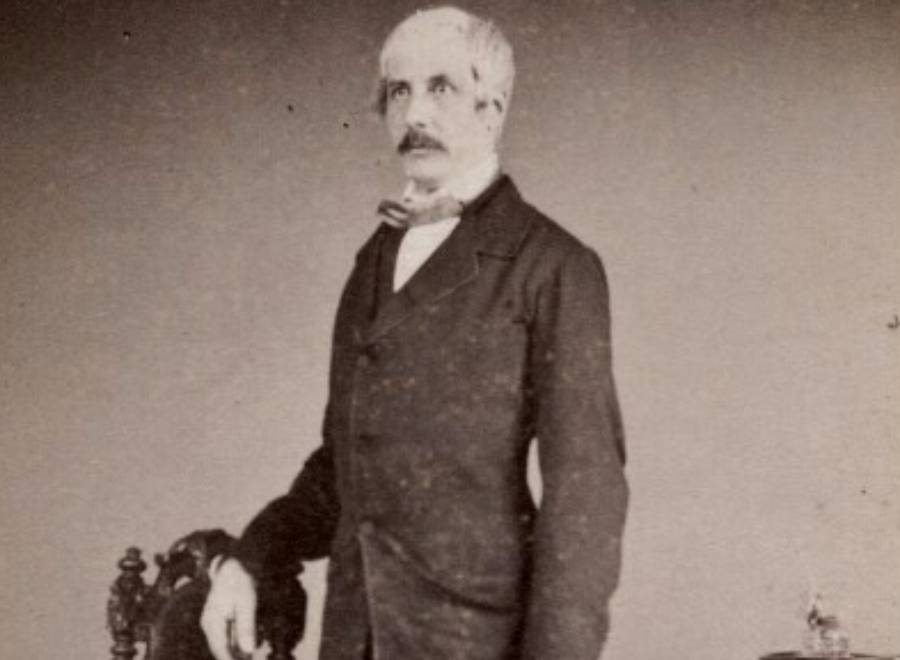 Henry Hering (1814-1893), Wikimedia Commons
Henry Hering (1814-1893), Wikimedia Commons
89. Daddy’s Girl to the End
At her request, Lovelace was buried next to her father Lord Byron at the Church of St. Mary Magdalene in Nottinghamshire. Yes, the adulterous father who kicked her out as a baby. Absence makes the heart grow more idealistic about long-departed daddies, I guess.
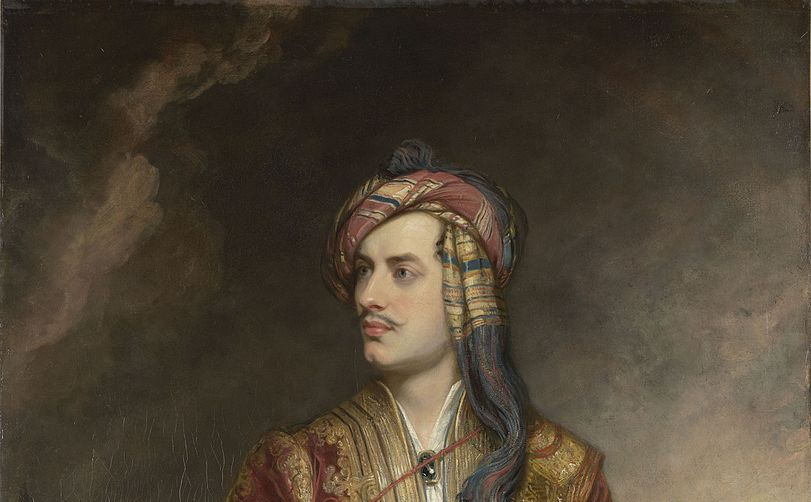 Thomas Phillips, Wikimedia Commons
Thomas Phillips, Wikimedia Commons
90. Retreat?
The 51st company, 2nd Battalion, 5th Marine Regiment were sent to Belleau Wood to back up a battalion of French fighters. When they arrived, they found the French hastening back to their camp; they were overwhelmed and insisted the Americans retreat. The commanding officer of the company stared at the French soldier and cried “Retreat? Hell, we just got here!” Nine days later, that officer, Capt. Lloyd Williams would be slain in battle. The 2nd Battalion would adopt the motto “Retreat, Hell” in his honor.
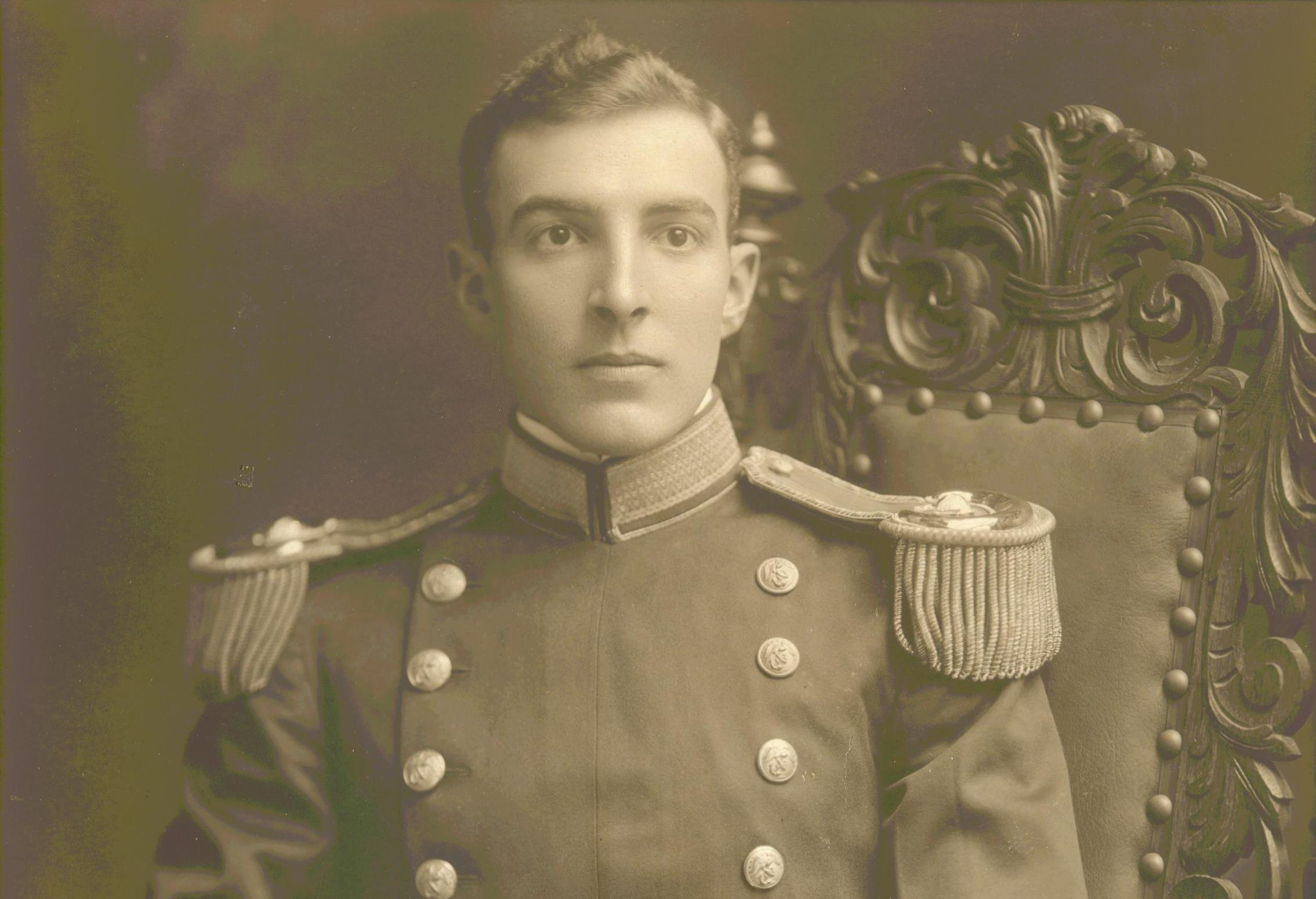 USMC, CC BY 2.0, Wikimedia Commons
USMC, CC BY 2.0, Wikimedia Commons
91. She Wears Her Heart (and Your Hubby) on Her Sleeve
Dressed in her Queen of Hearts gown, Virginia Oldoini, the Countess of Castiglione, once scandalously entered a royal ball on the arm of her (married) lover, Emperor Napoleon III, right in front of his wife. At least the empress got one snipe in. The spurned wife reportedly gave Oldoini’s sexy outfit a once-over and told her, “The heart is a bit low, Madame".
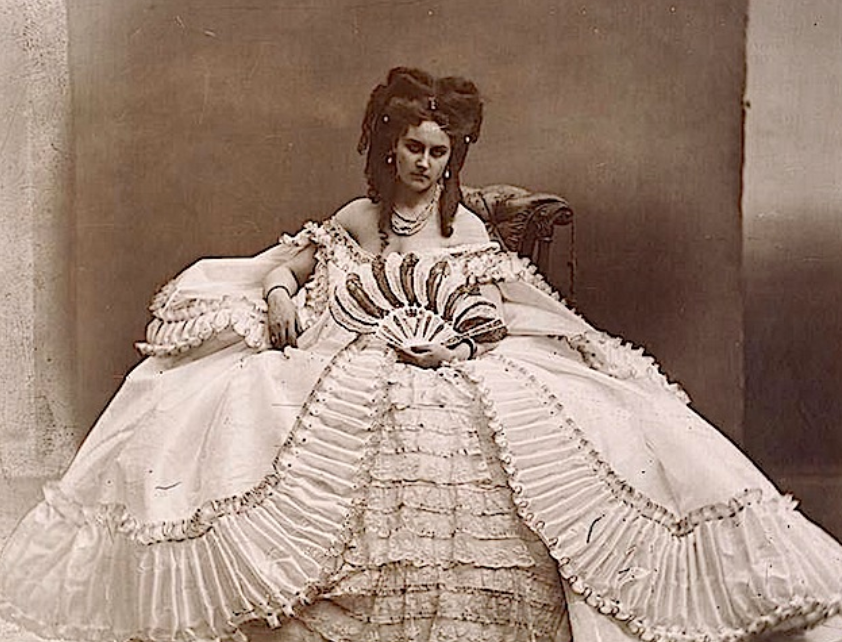 Pierre-Louis Pierson, Wikimedia Commons
Pierre-Louis Pierson, Wikimedia Commons
92. If I Can’t See Me, You Can’t Either
Oldoini did not cope well with aging. Unwilling to confront her fading looks, she spent her final years in black-colored rooms with closed blinds and no mirrors. Not even she was entitled to look at the waning beauty of the Countess of Castiglione.
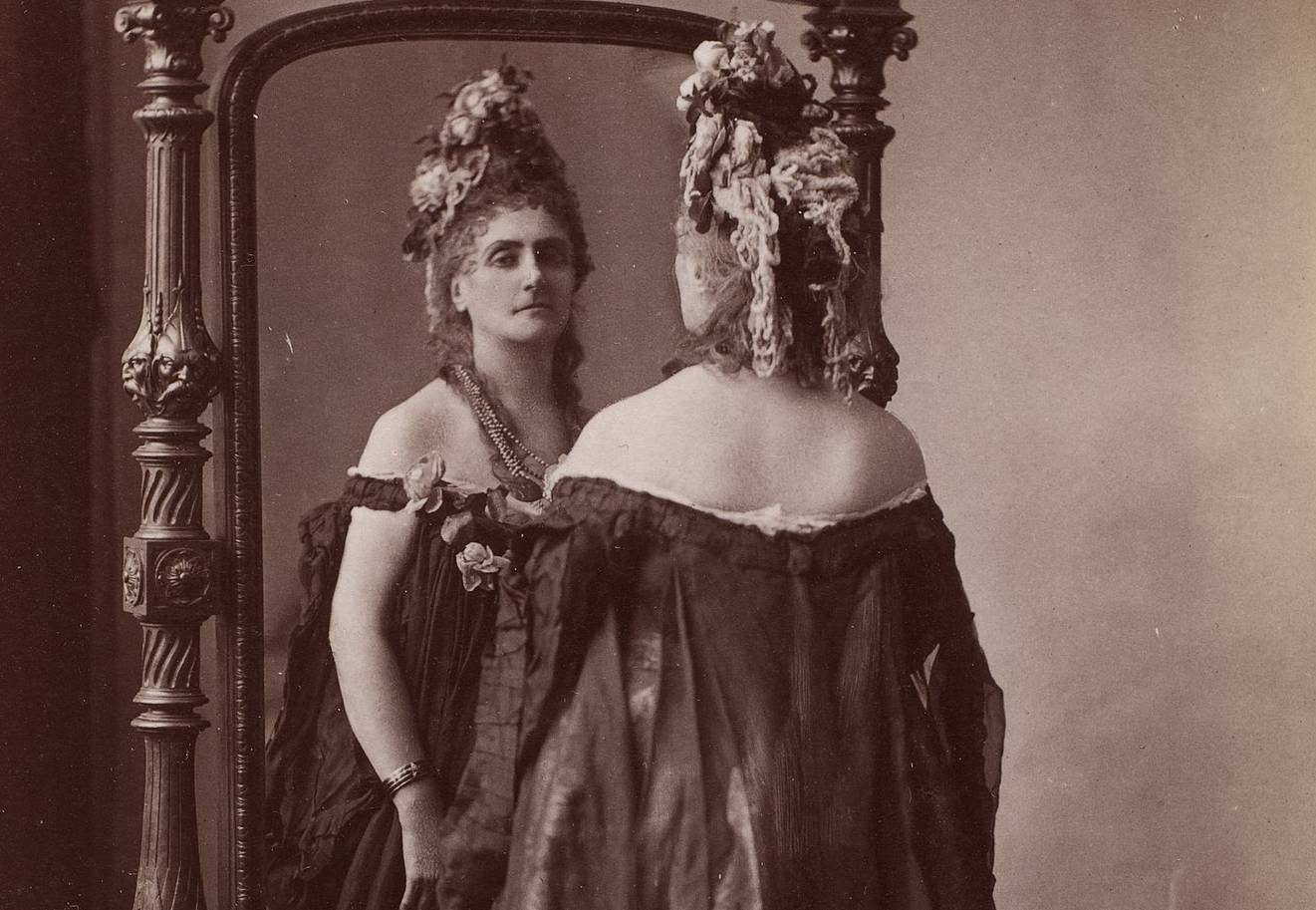 Pierre-Louis Pierson, CC0, Wikimedia Commons
Pierre-Louis Pierson, CC0, Wikimedia Commons
93. The Dark Ages
Despite her self-exile later in life, the Countess still found time to do the occasional photo shoot. She and her longtime photographer Pierre-Louis Pierson took up the camera work again—but critics did note how these projects were smaller, shorter, and even “more morbid, more disturbed, more deranged" than before.
94. Not a Morning Person
In her later years, the Countess did leave her house now and then—but only under veils, and only with the cover of darkness to hide her “shameful” age.
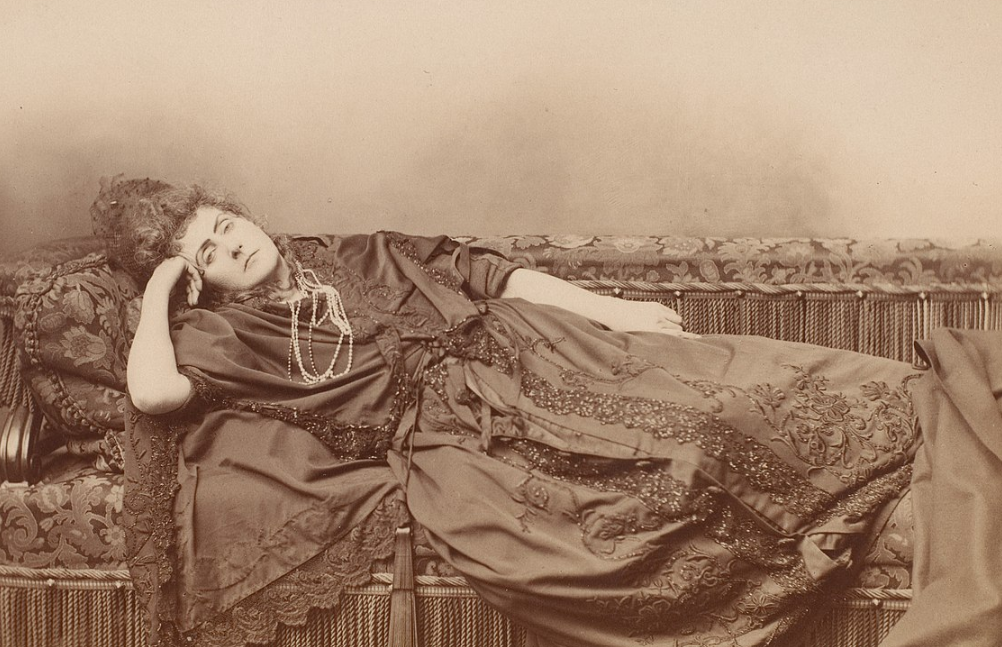 Pierre-Louis Pierson, CC0, Wikimedia Commons
Pierre-Louis Pierson, CC0, Wikimedia Commons
95. The Prodigal Son Doesn’t Return
The Countess of Castiglione’s self-seclusion might have been rooted in more than vanity. In 1879, her beloved and only son Giorgio succumbed to smallpox, predeceasing his mother by 20 years. Suddenly, her regime of funeral black rooms, veils, and never leaving the house makes tragic sense…
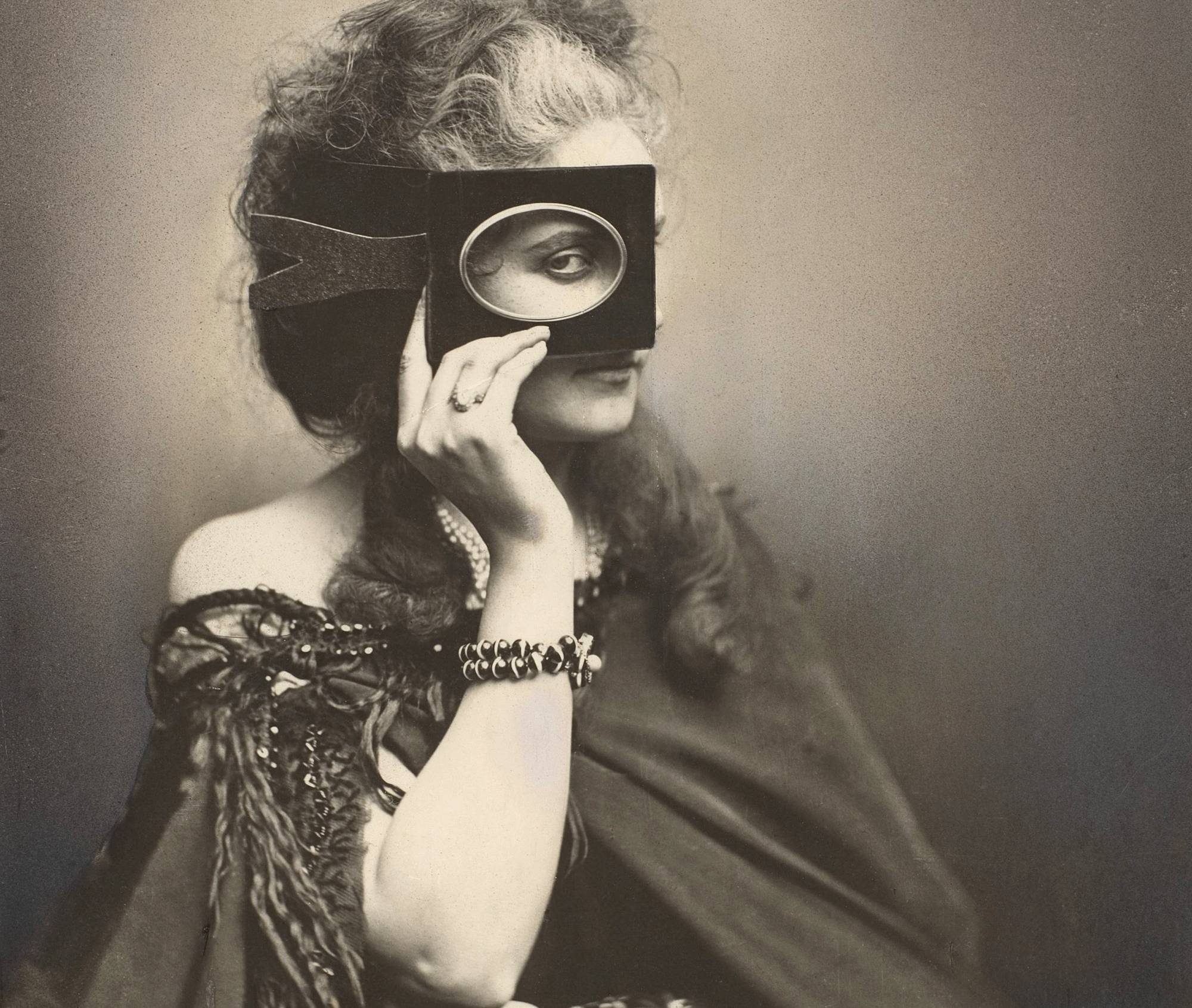 Pierre-Louis Pierson, Wikimedia Commons
Pierre-Louis Pierson, Wikimedia Commons
96. Putting the “Snap” in Snapchat
The Countess's fashion shoots also doubled as warning shots to her enemies. When her estranged husband tried to claim custody of their son, she sent him a photo herself in loose hair…and a blade in her hand. Naturally, the photo was titled “La Vengeance".
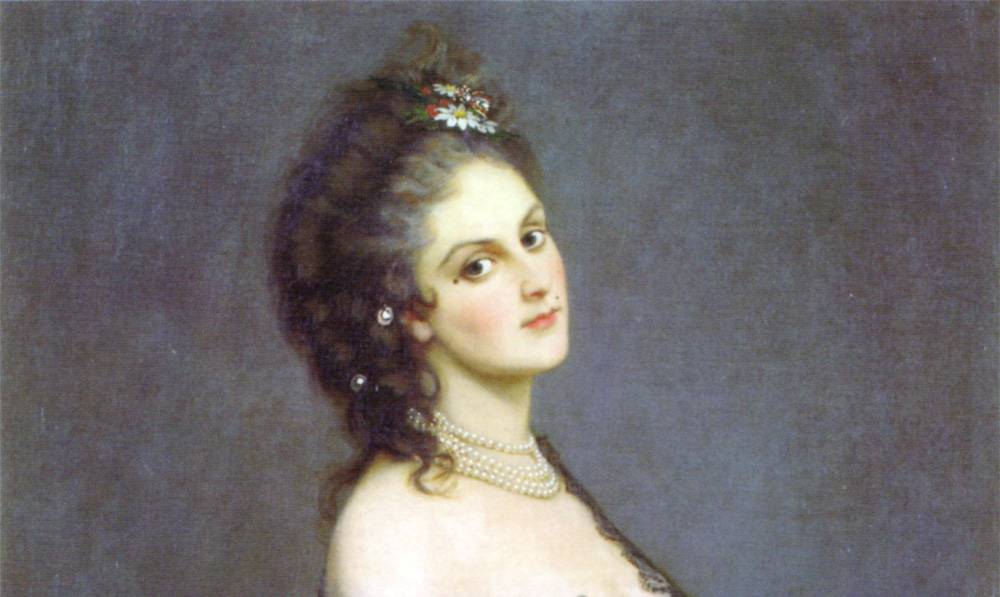 Michele Gordigiani, Wikimedia Commons
Michele Gordigiani, Wikimedia Commons
97. Long-Term Houseguest
Sometimes, Queens trusted their ladies-in-waiting as royal jailers. Bess of Hardwick was one of the most powerful ladies-in-waiting to Queen Elizabeth I. In 1569, Elizabeth asked Hardwick and her husband to “hold” Mary, Queen of Scots on behalf of the law. The couple performed this duty for 15 years.
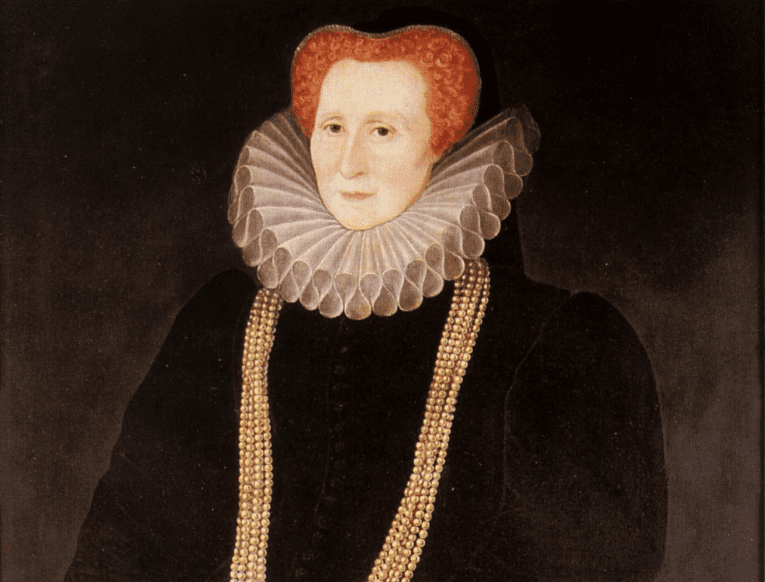 Rowland Lockey, Wikimedia Commons
Rowland Lockey, Wikimedia Commons
98. Paternal & Papal Invasions of Privacy
On October 2, 1533, the Pope Clement VII married Catherine de Medici off to the French Dauphin (the son of the King), Henri. The couple was lucky to be the same age—just 14 years old—but old men still wormed their way into the honeymoon. Henri’s father, King Francis I, apparently stayed in the bedroom until the marriage was fully consummated, and the Pope visited the couple in bed the next morning to bless the previous night’s “proceedings". Yick.
 Workshop of François Clouet, Wikimedia Commons
Workshop of François Clouet, Wikimedia Commons
99. Thanks, Diane
Catherine’s husband was utterly enthralled by his mistress, Diane de Poitiers. In fact, it was Poitiers who had to remind Henri of his royal baby-making “duties,” and bid him to spend more (re)productive time with his wife. You know you're doing something wrong when your mistress starts telling you to sleep with your wife.
 François Clouet, Wikimedia Commons
François Clouet, Wikimedia Commons
100. Corporal Punishment at the French Court
When Catherine’s youngest daughter, Marguerite, was found to be having an affair with Henry of Guise, Catherine and her son Charles IX allegedly had the princess pulled from her bed, her nightclothes ripped, and her hair torn from her head as punishment. Yowch.
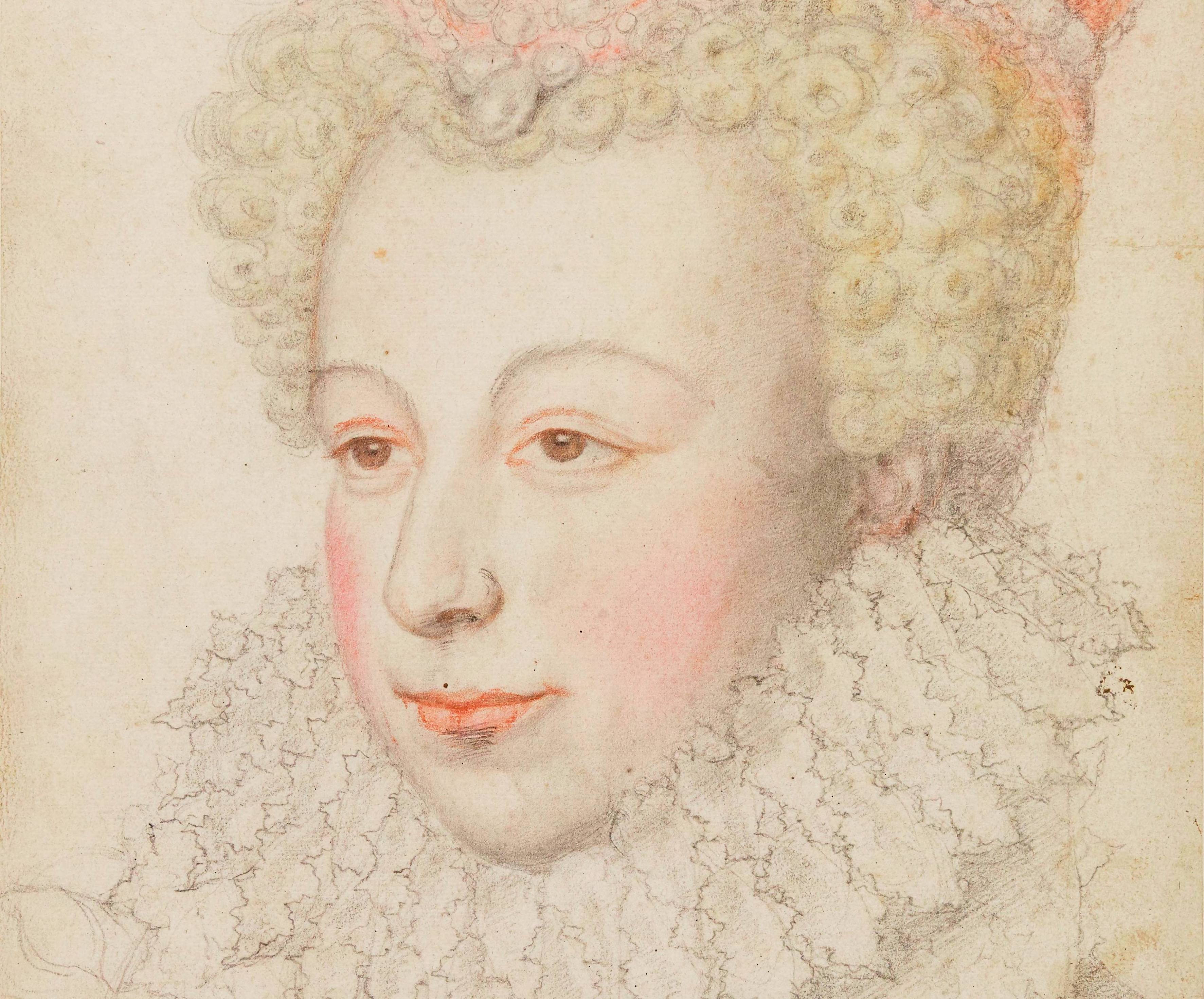 Unknown Author, Wikimedia Commons
Unknown Author, Wikimedia Commons
101. Move Over, Red Wedding
In 1572, Catherine forced her daughter to marry Henry de Bourbon, despite her own animosity towards French Huguenots like himself. Just six days later after the wedding, Catherine and Charles IX unleased the St. Bartholomew’s Day Massacre, a Catholic mob against French Protestants (Huguenots) that just happened to kill many of Henry’s assembled in-laws!
102. Catch These Hands
Catherine introduced perfumed gloves into French fashion, but her trendsetting raised suspicions when one of Catherine’s greatest enemies, Jeanne d’Albret, was found deceased, and rumors circulated that d’Albret had been slain by a gift of poisoned gloves. Ahh, the oldest trick in the book.
103. In-Laws, Am I Right?
After the demise of Catherine and (months later) her final son, Henri III, Catherine’s son-in-law seized the throne as Henri IV of France. However, he promptly annulled his marriage to Catherine’s daughter, Marguerite, and replaced her with Catherine’s own cousin, Marie de Medici! (At least your blood stayed on the throne, Catherine).


